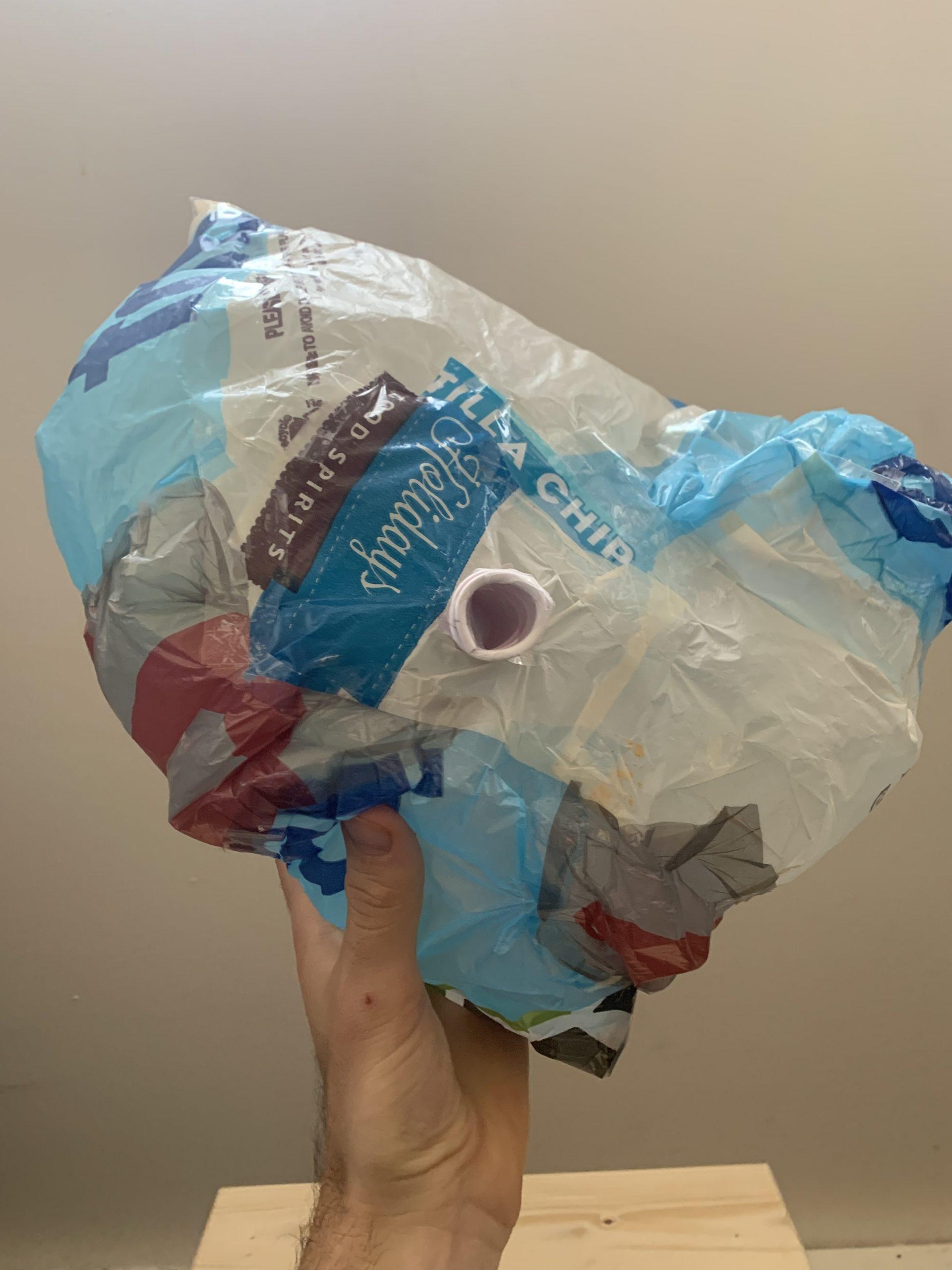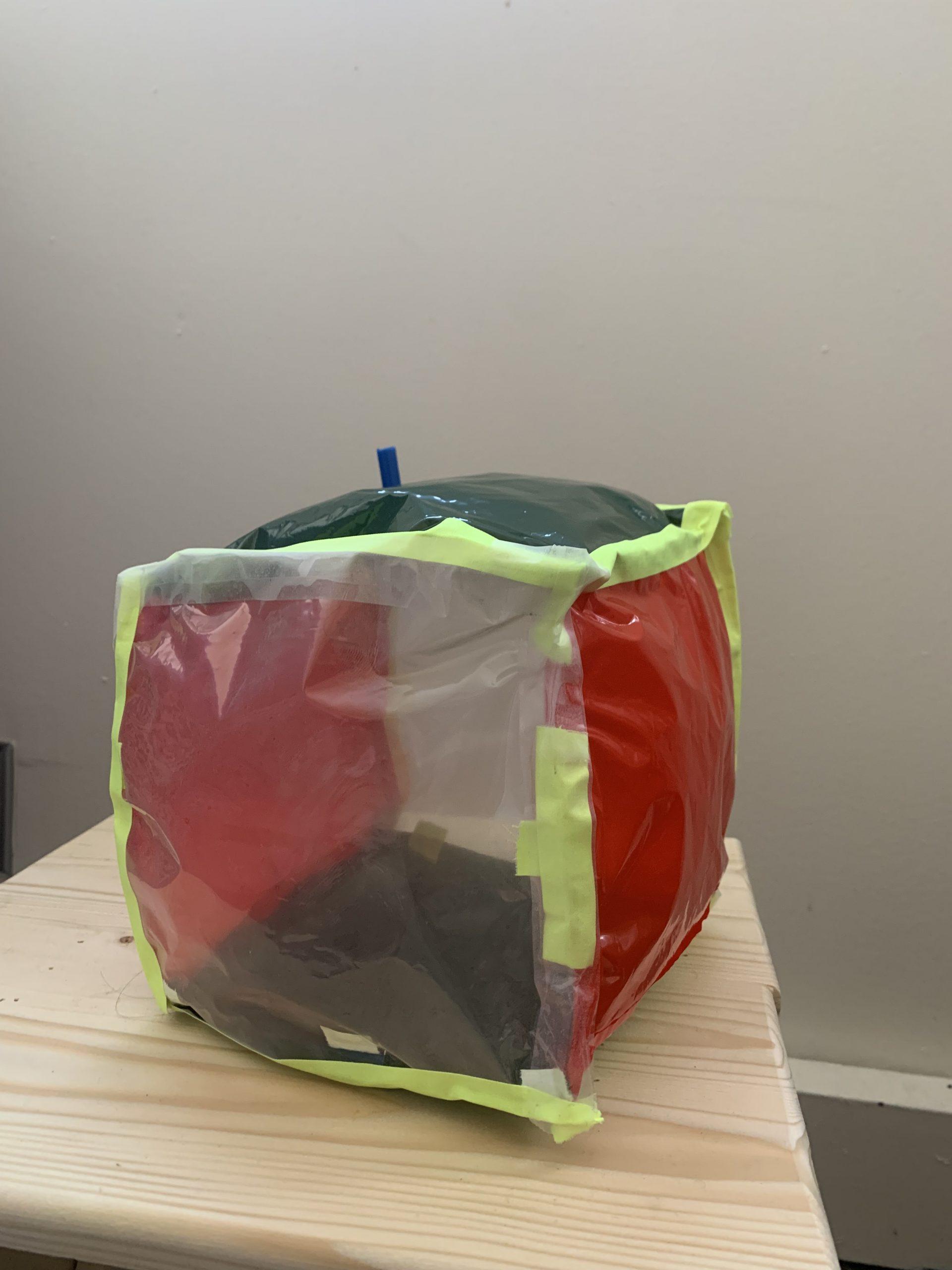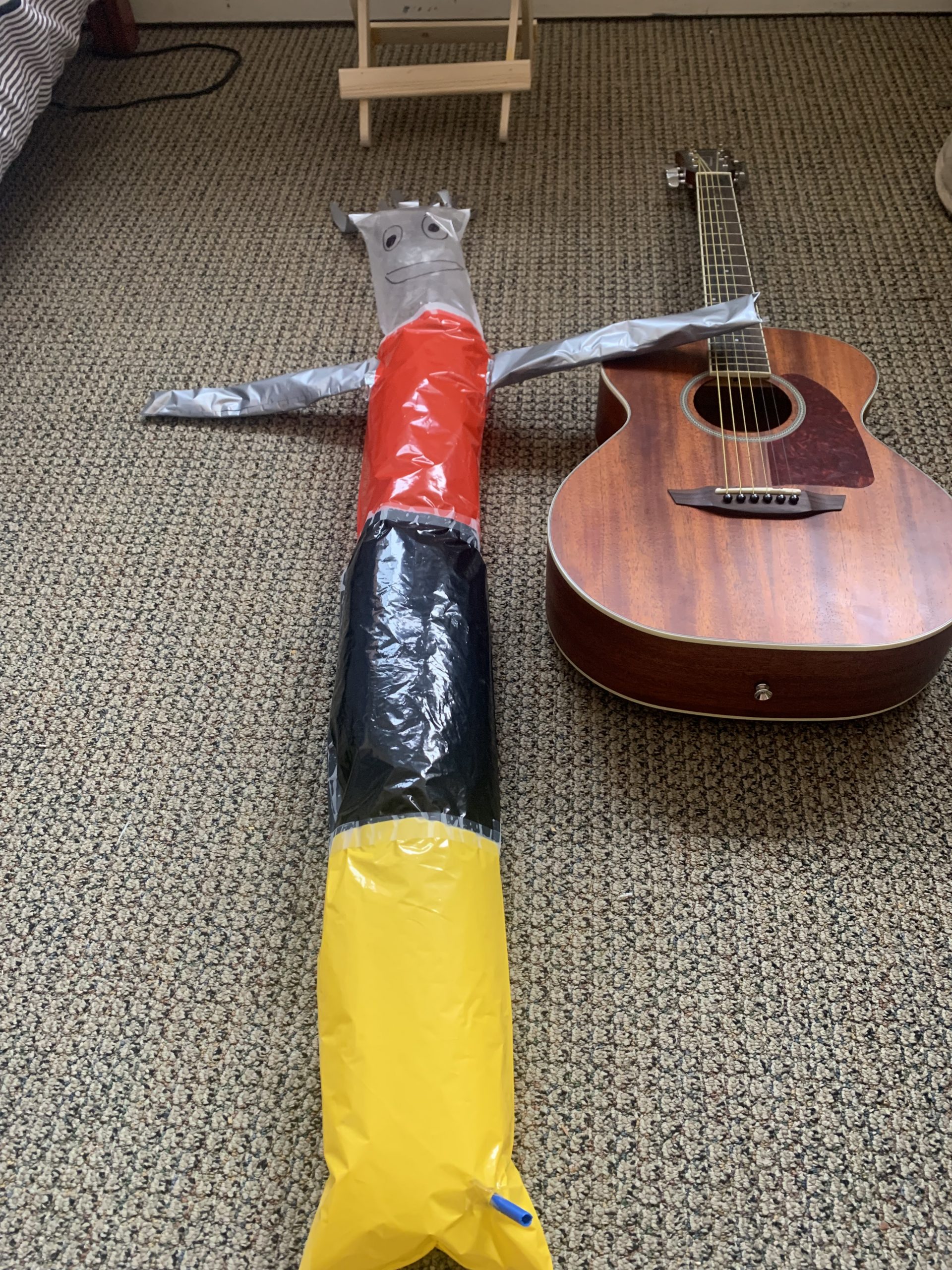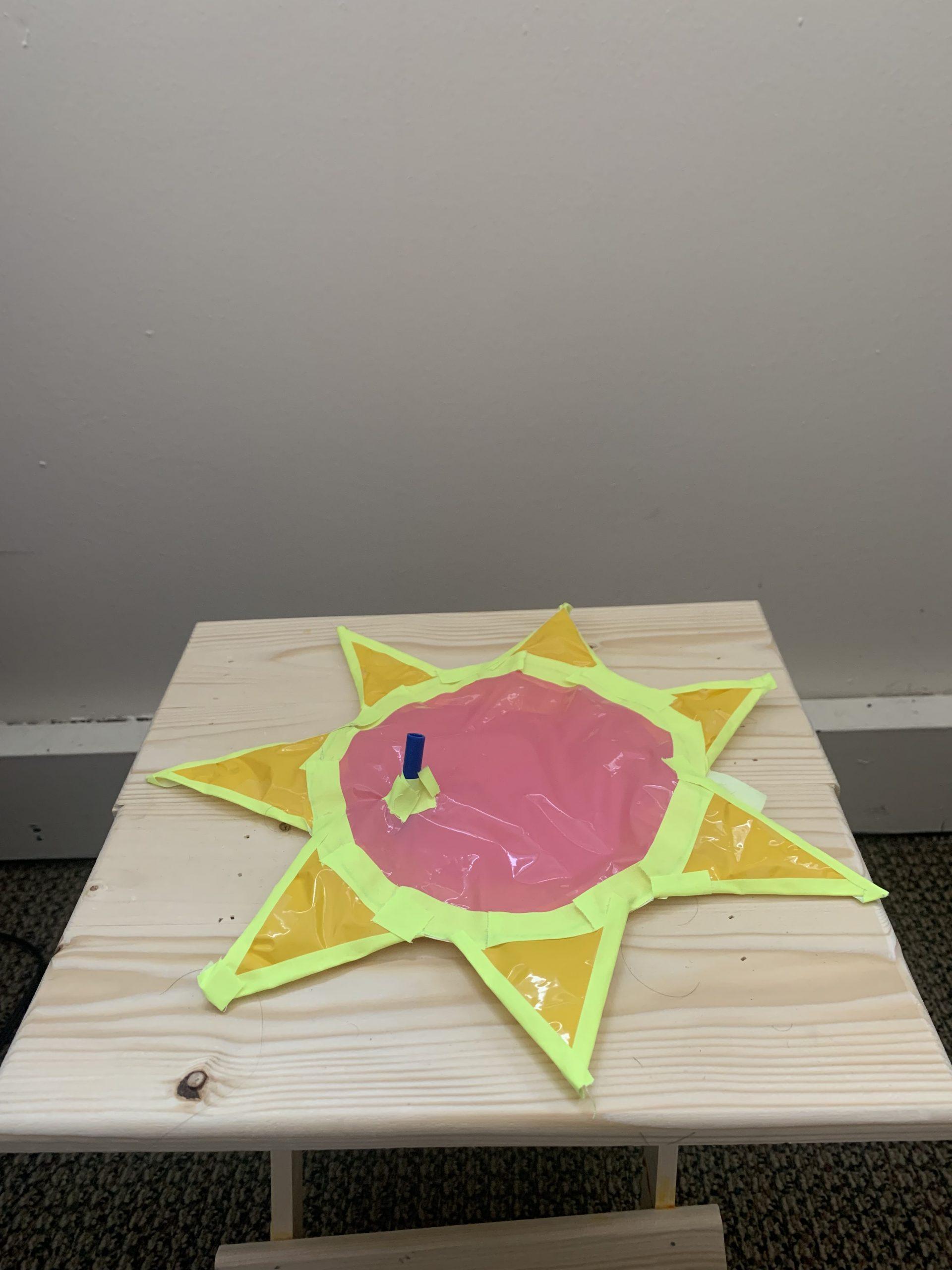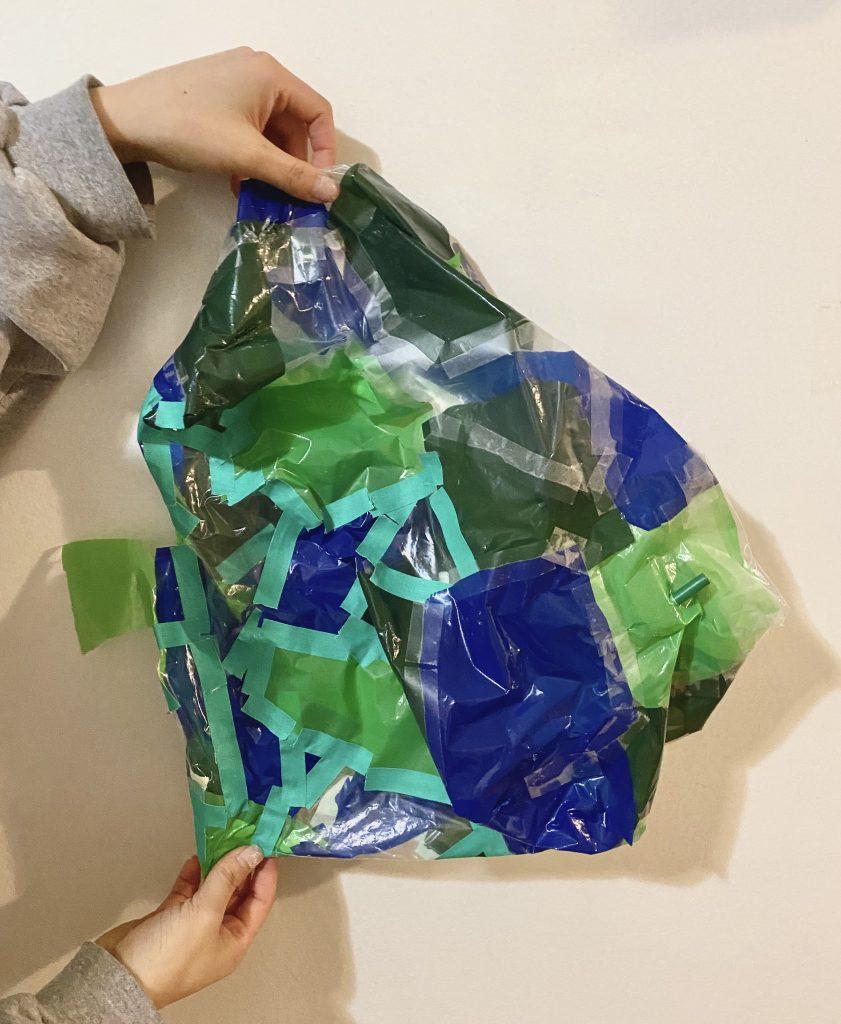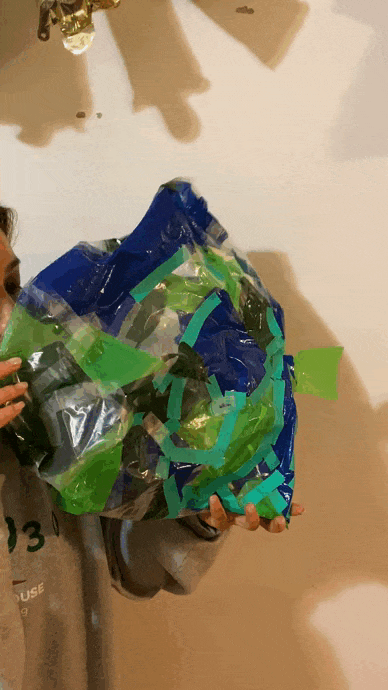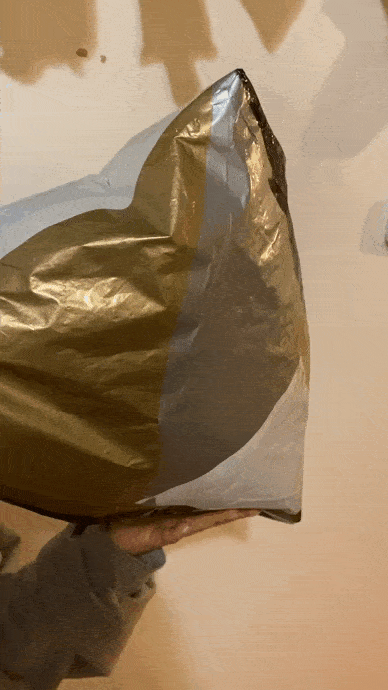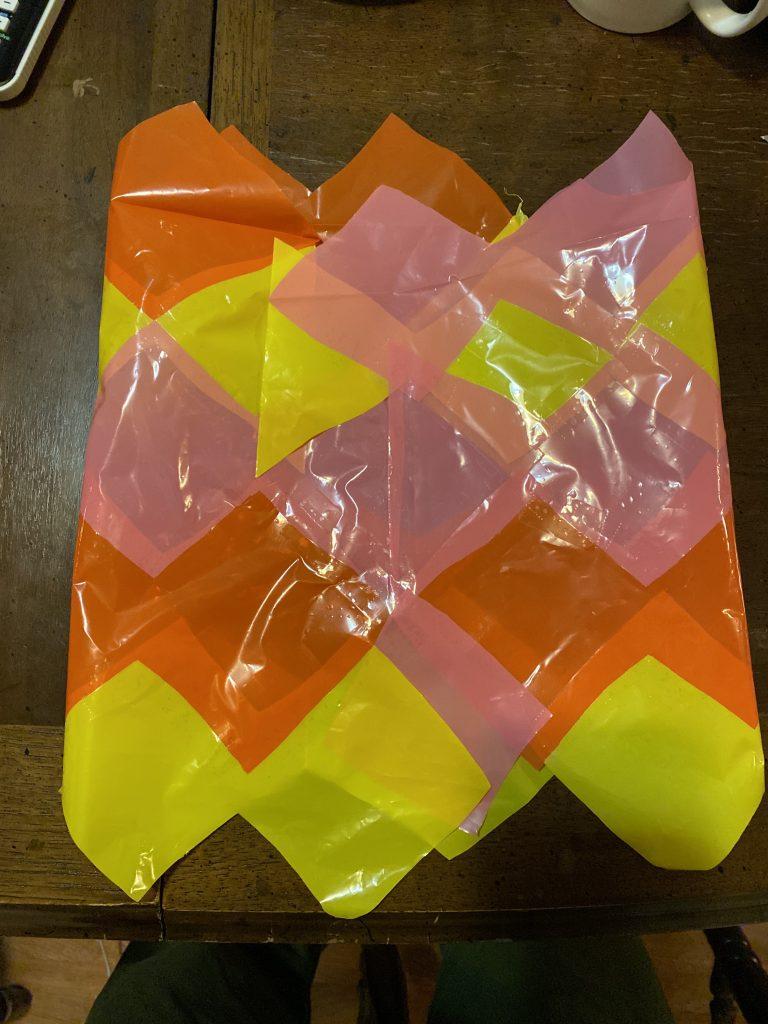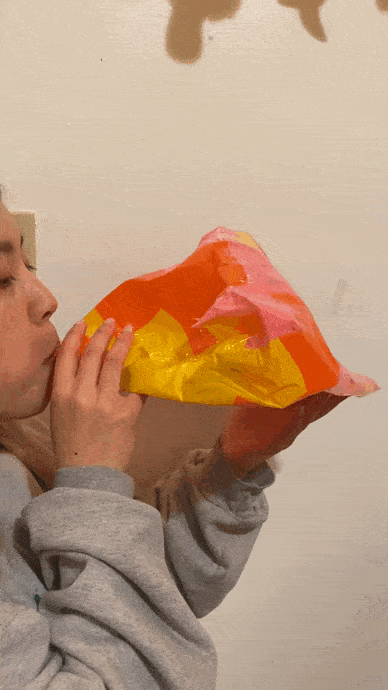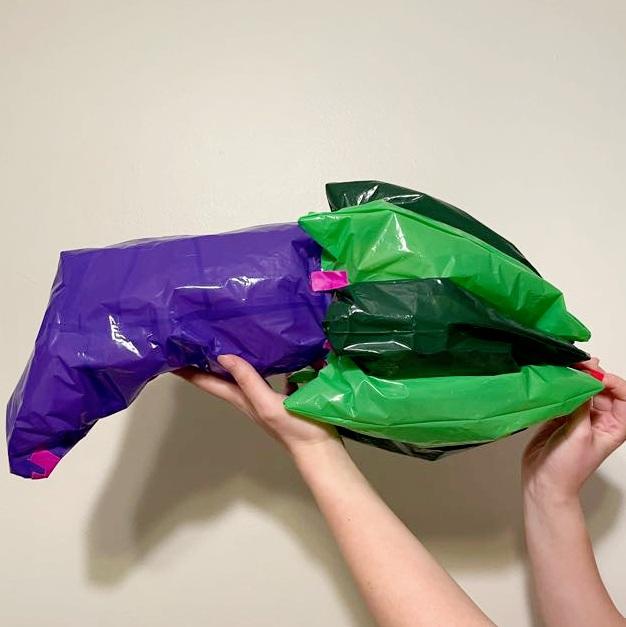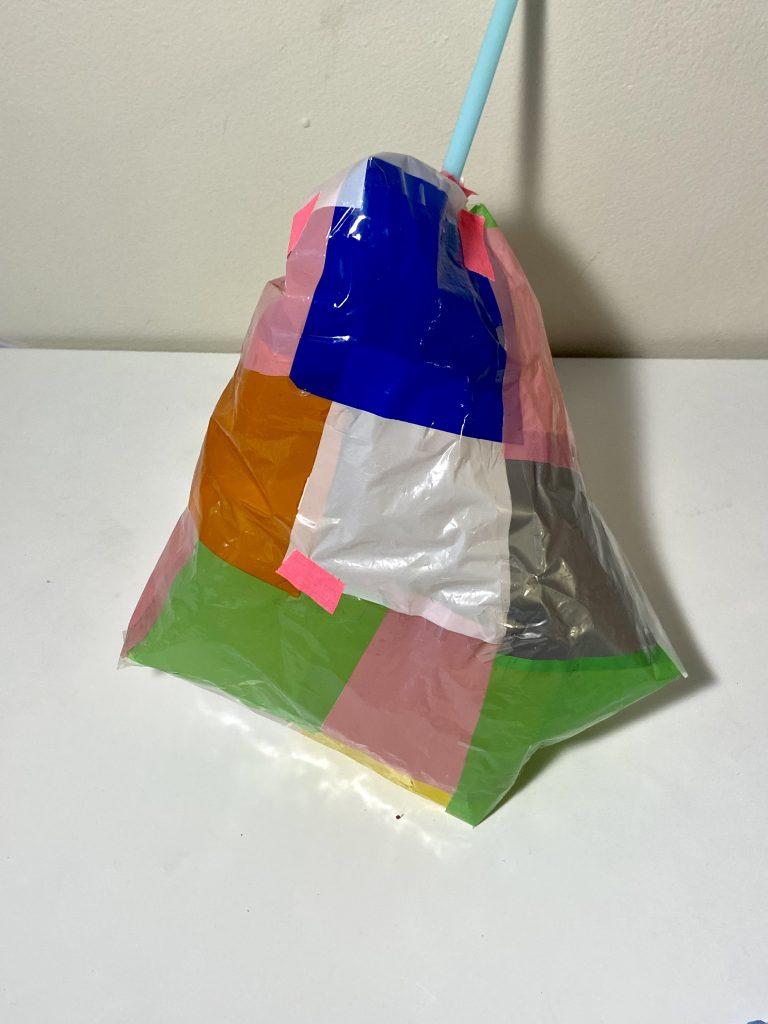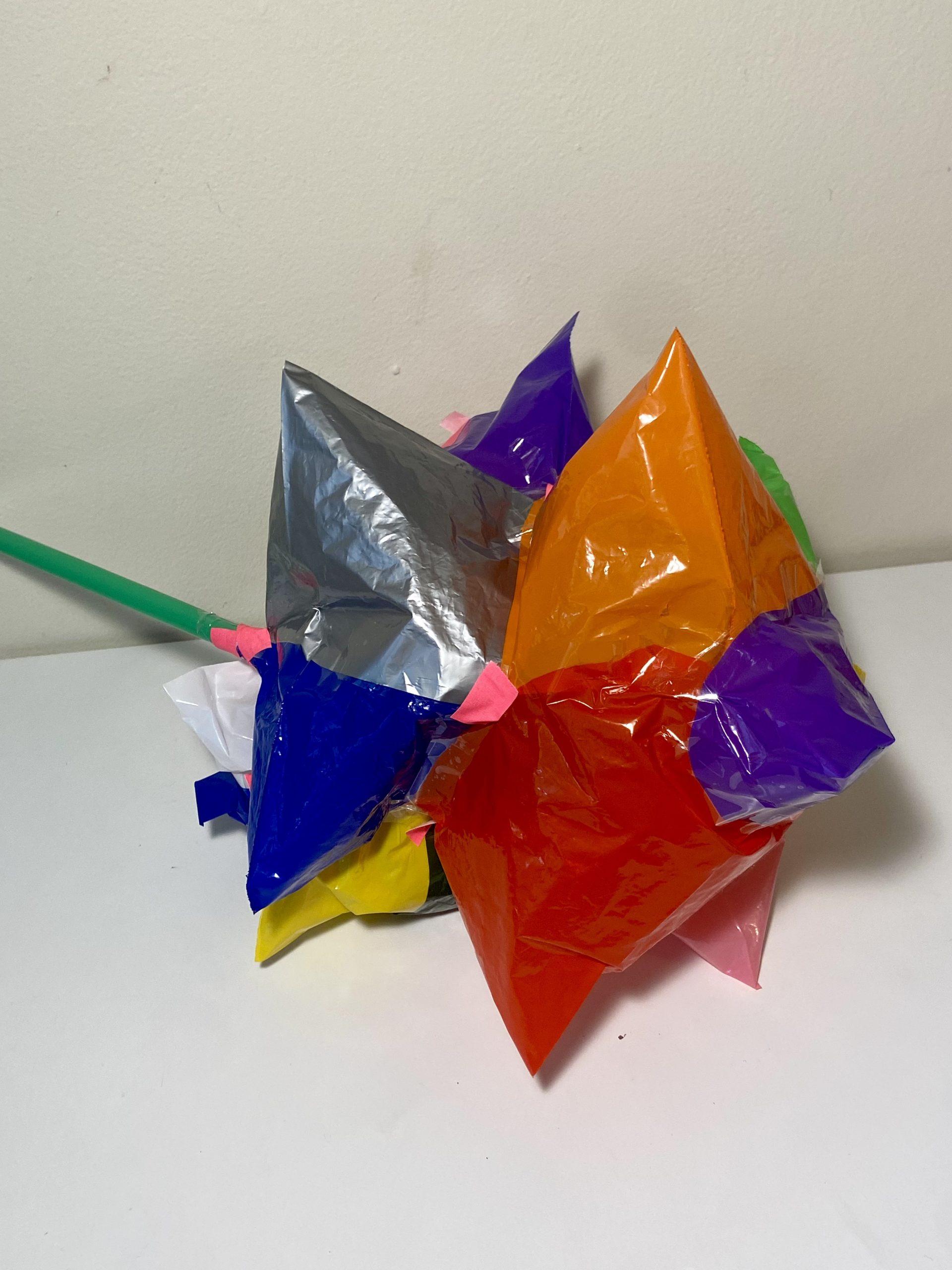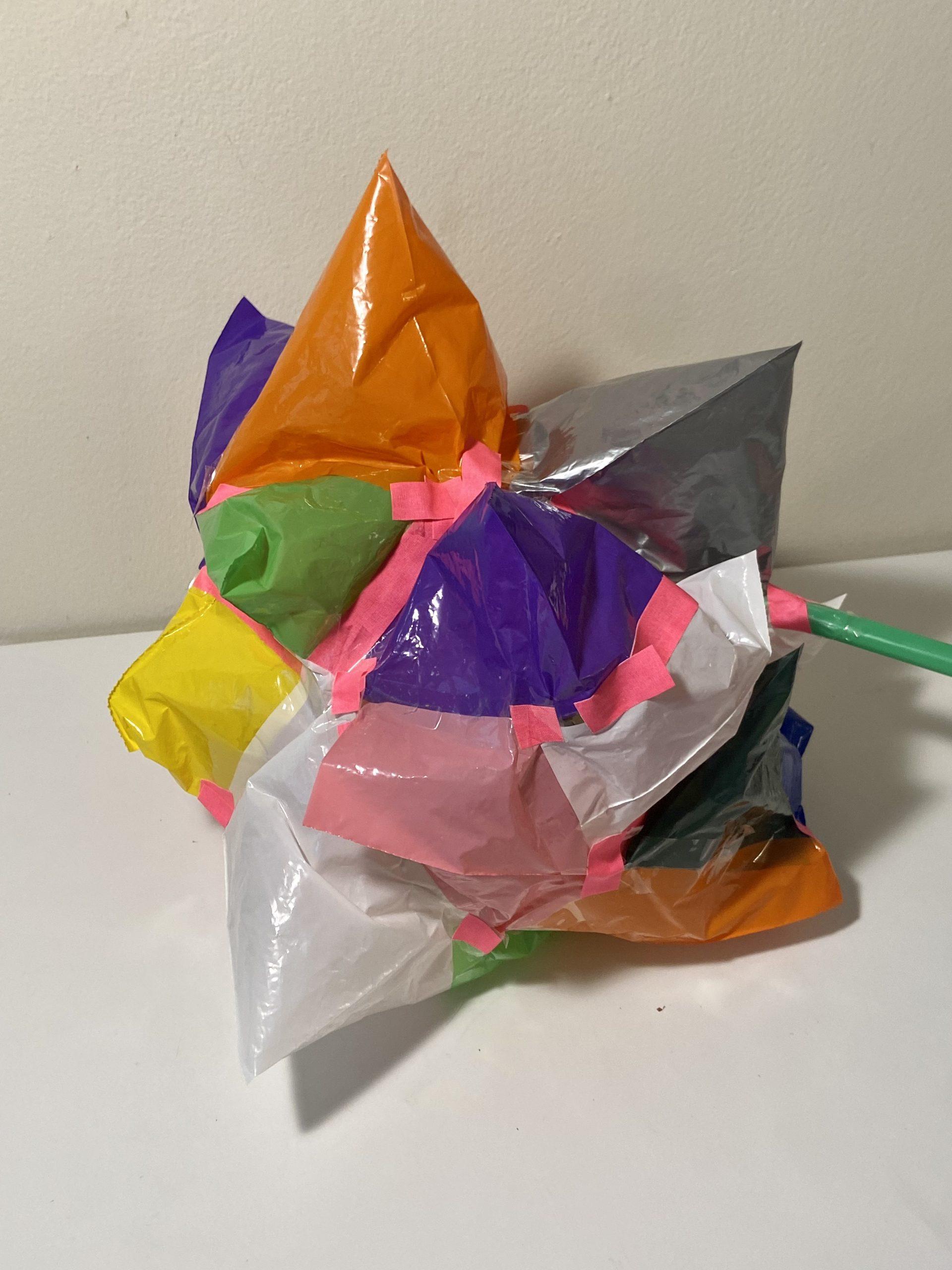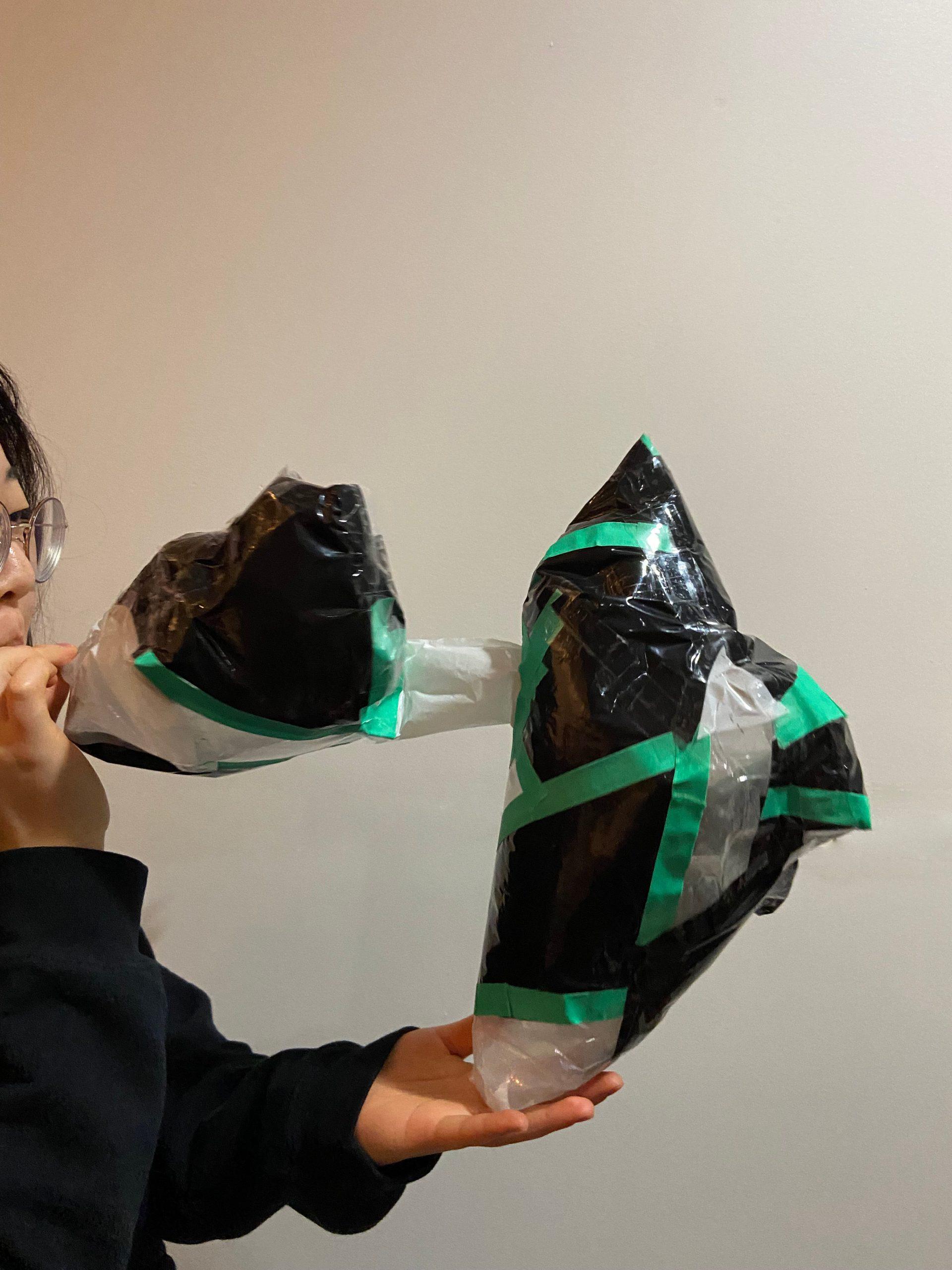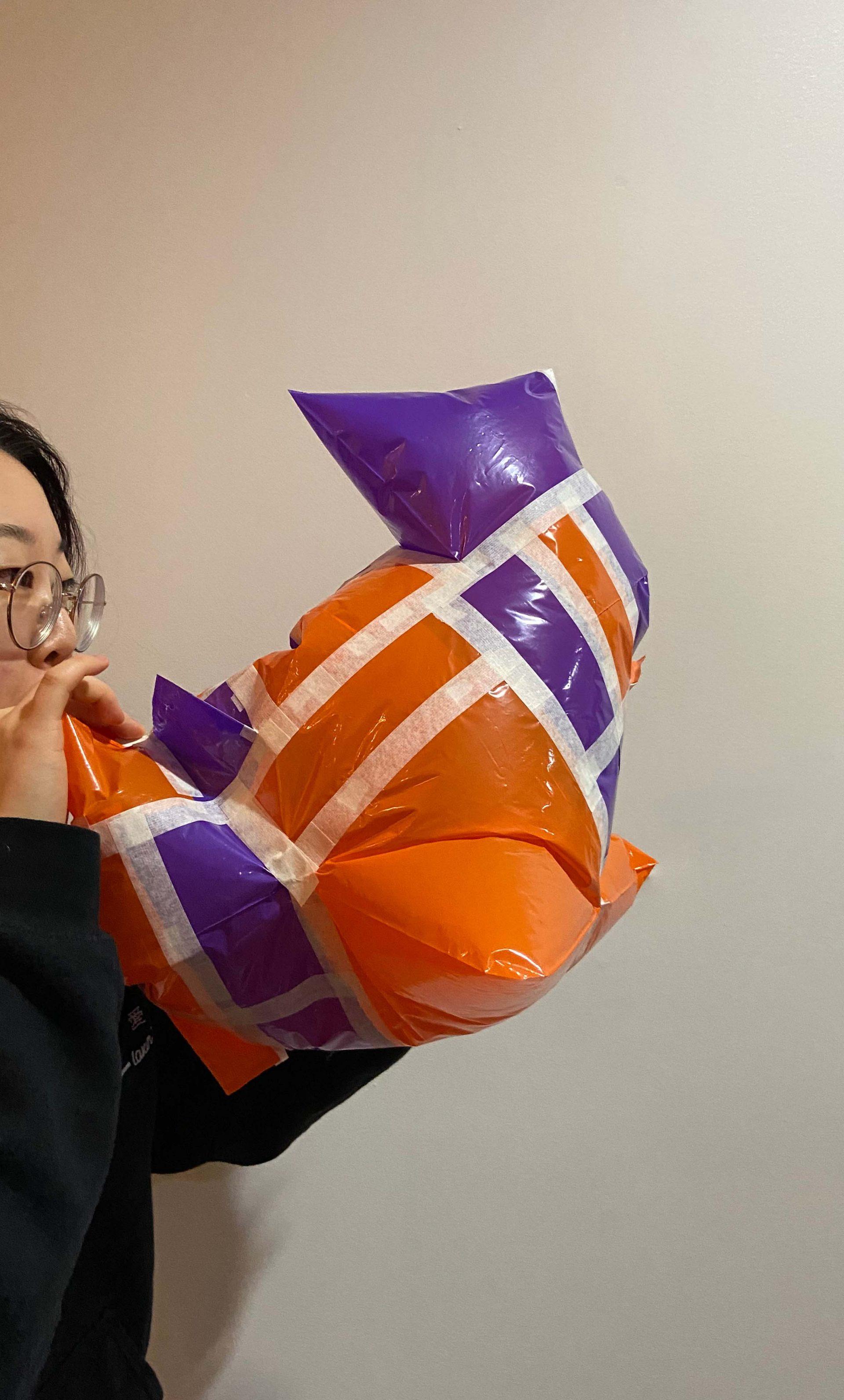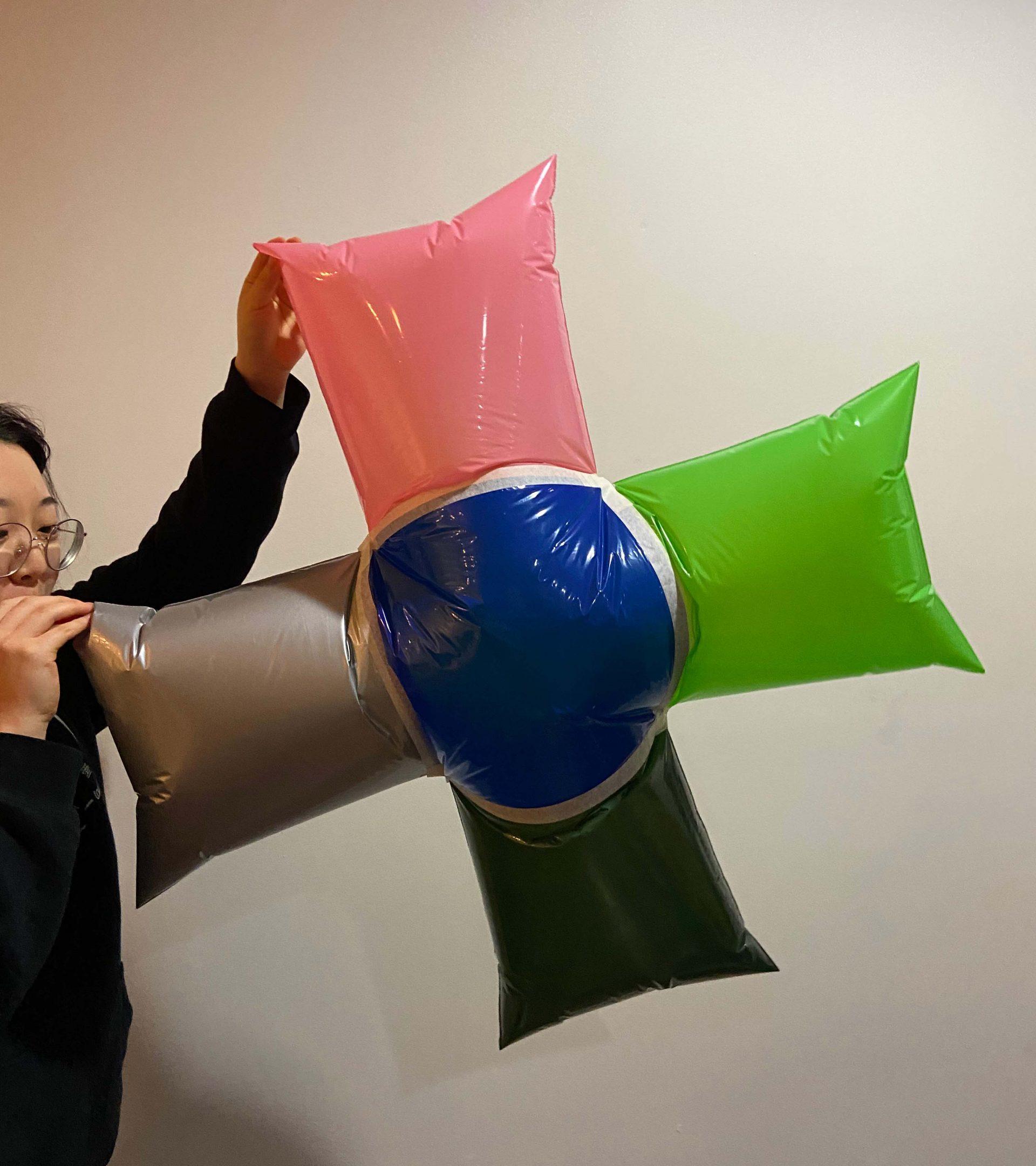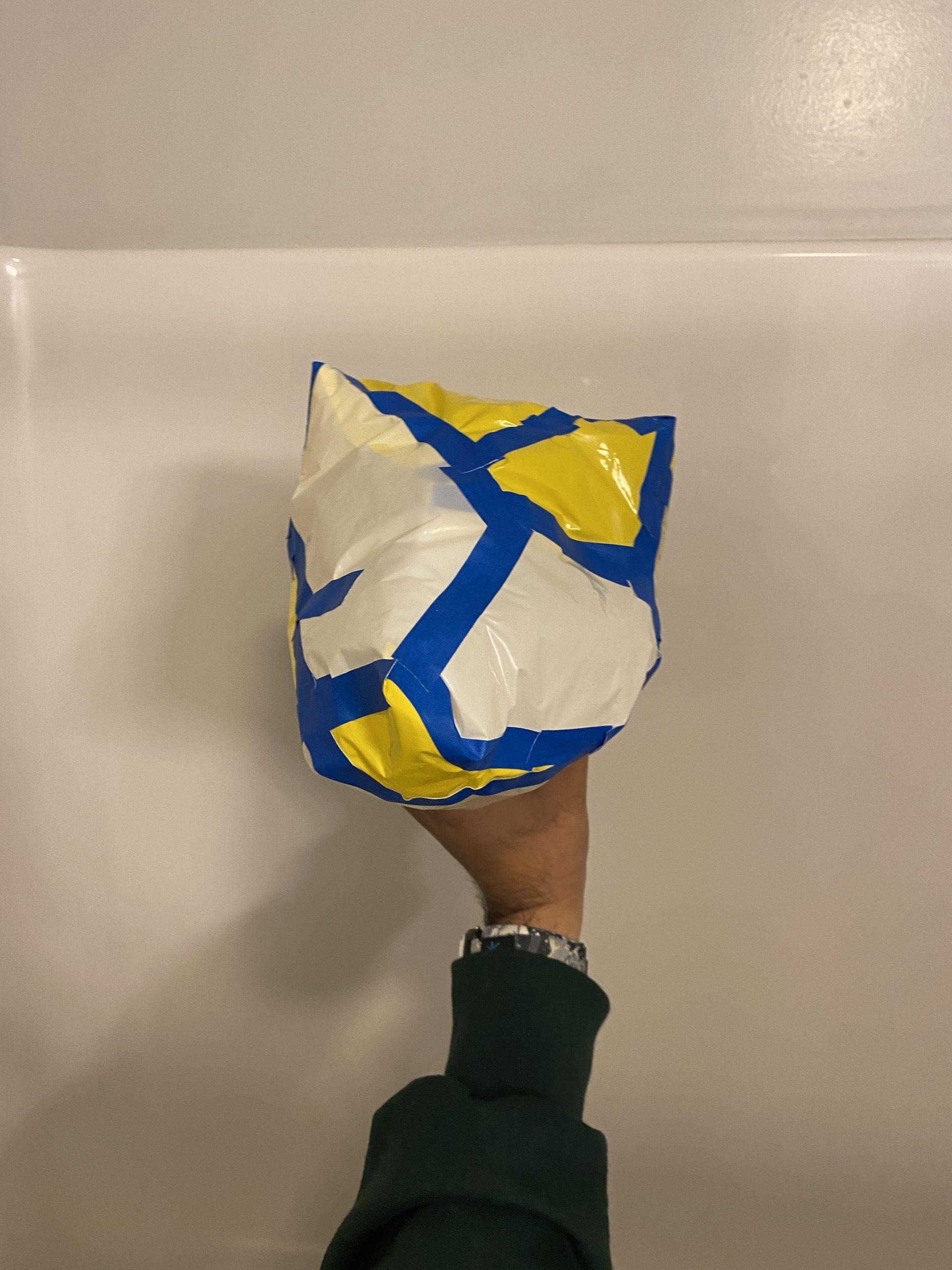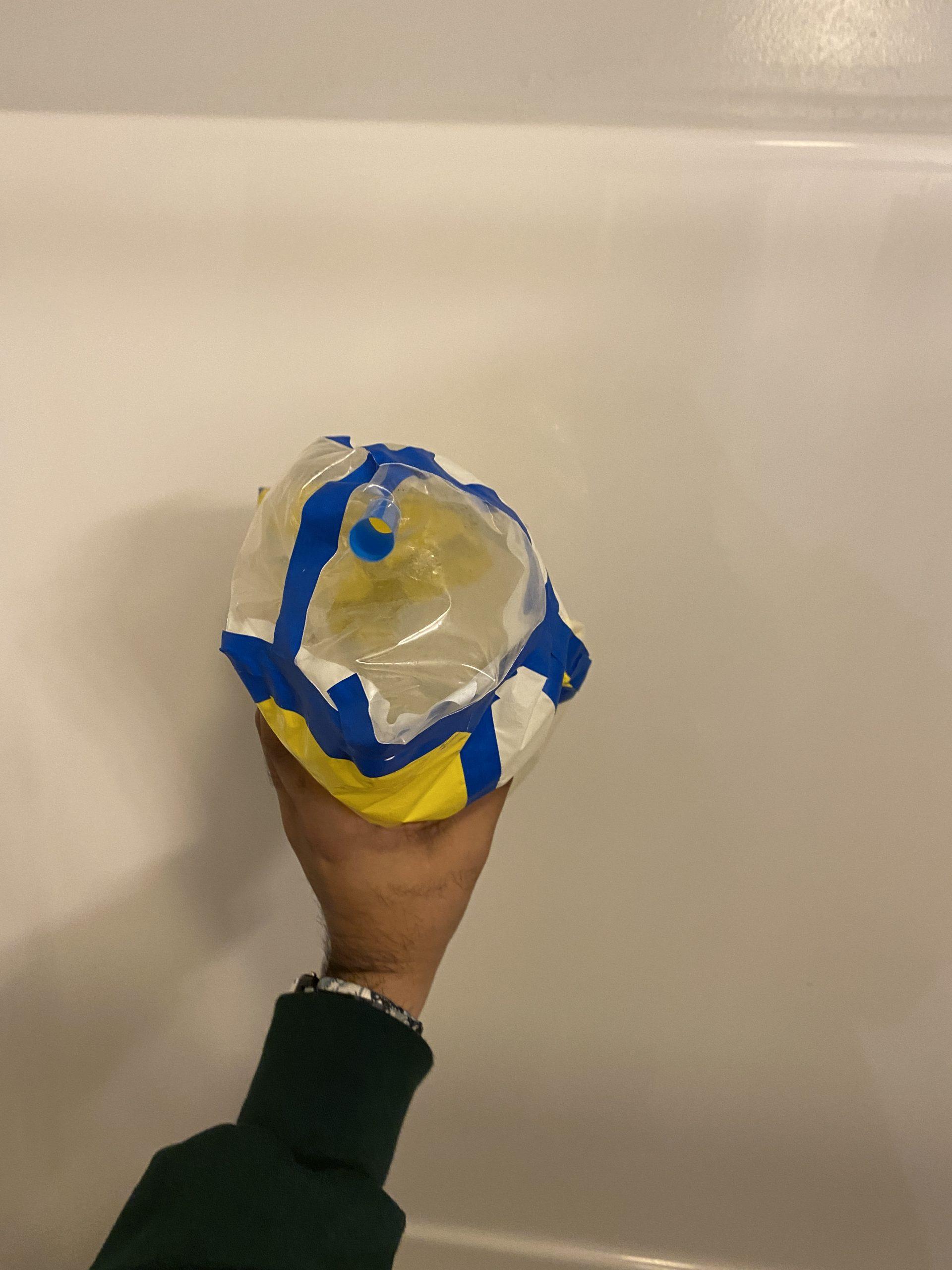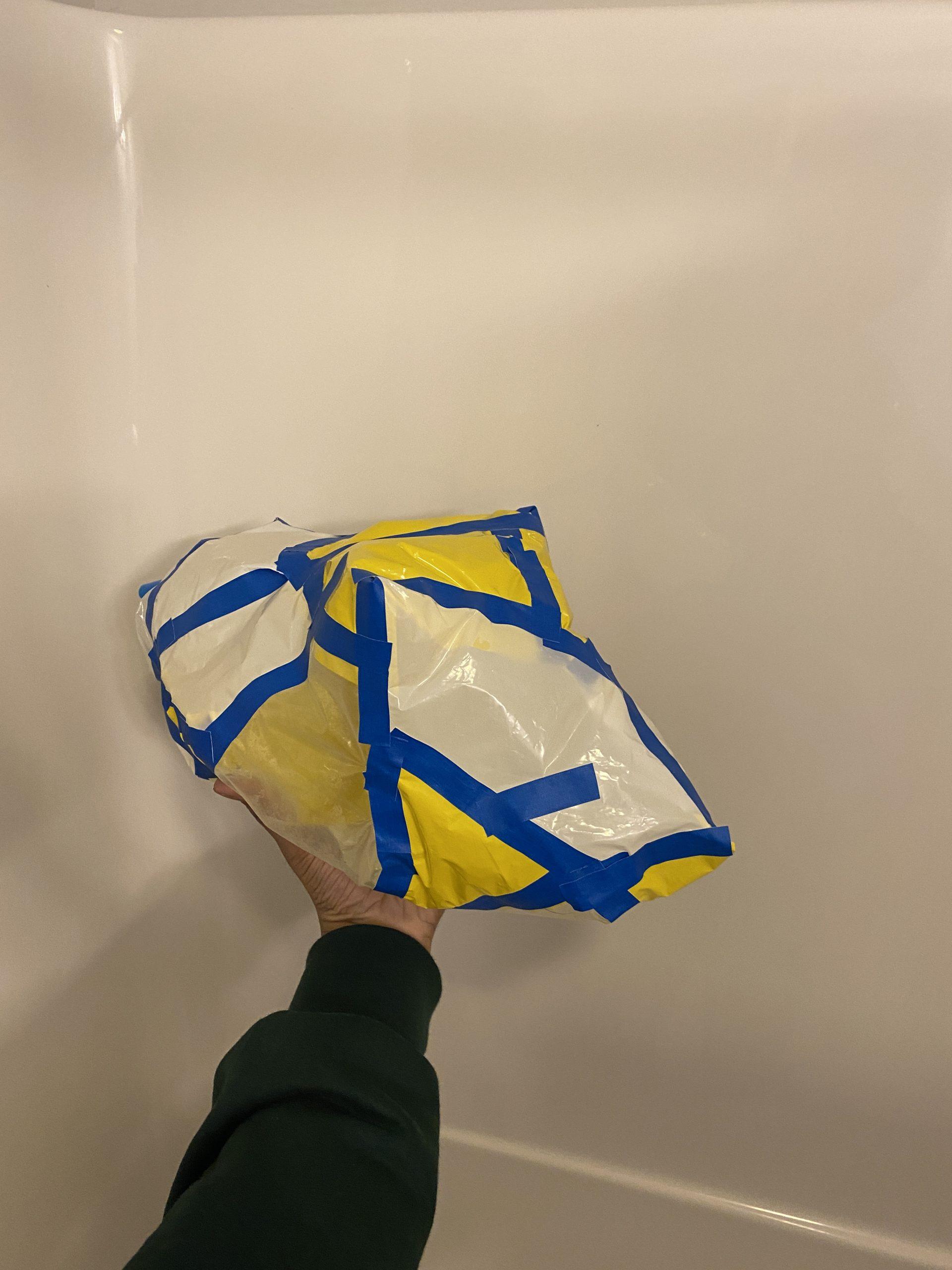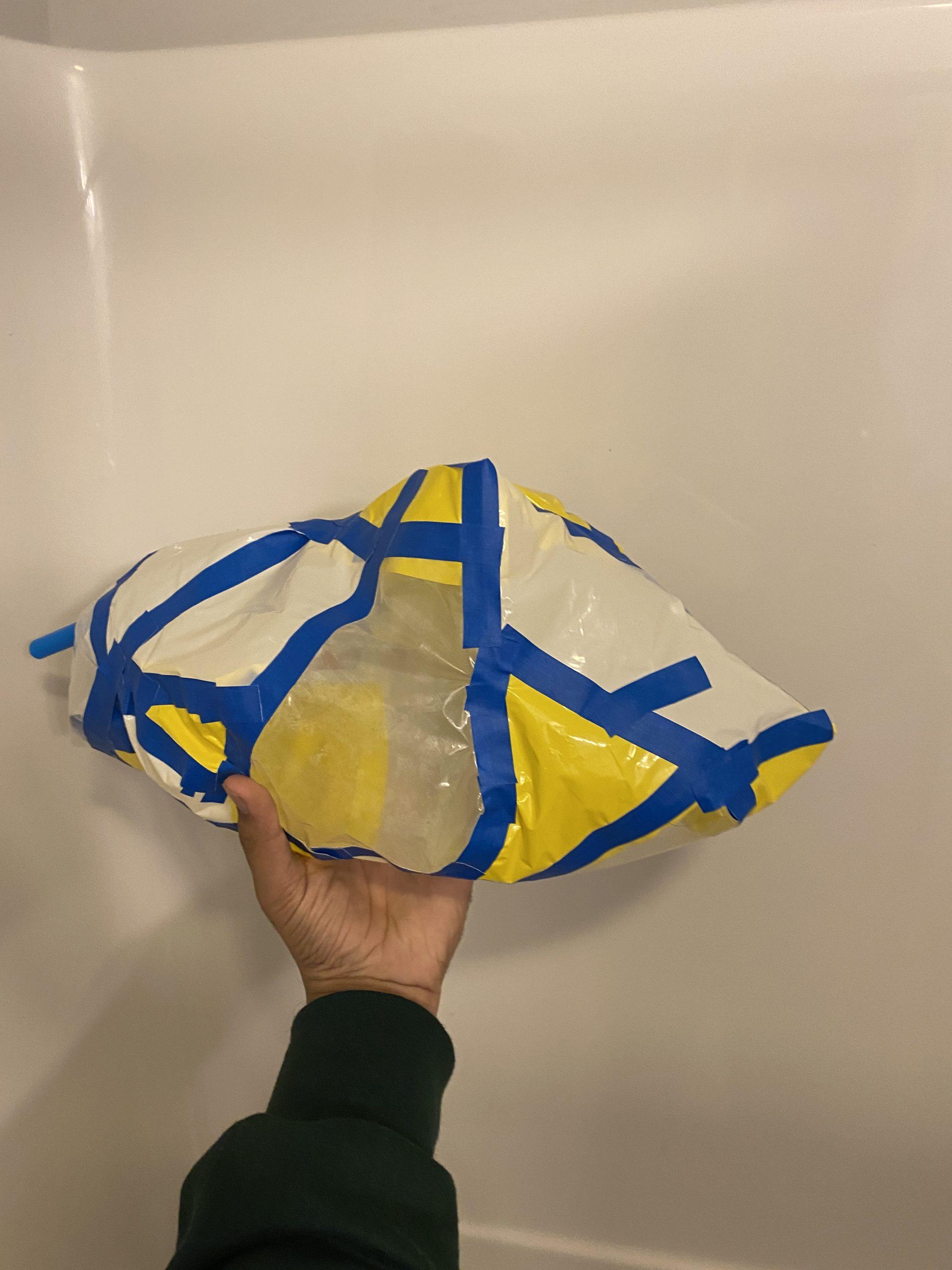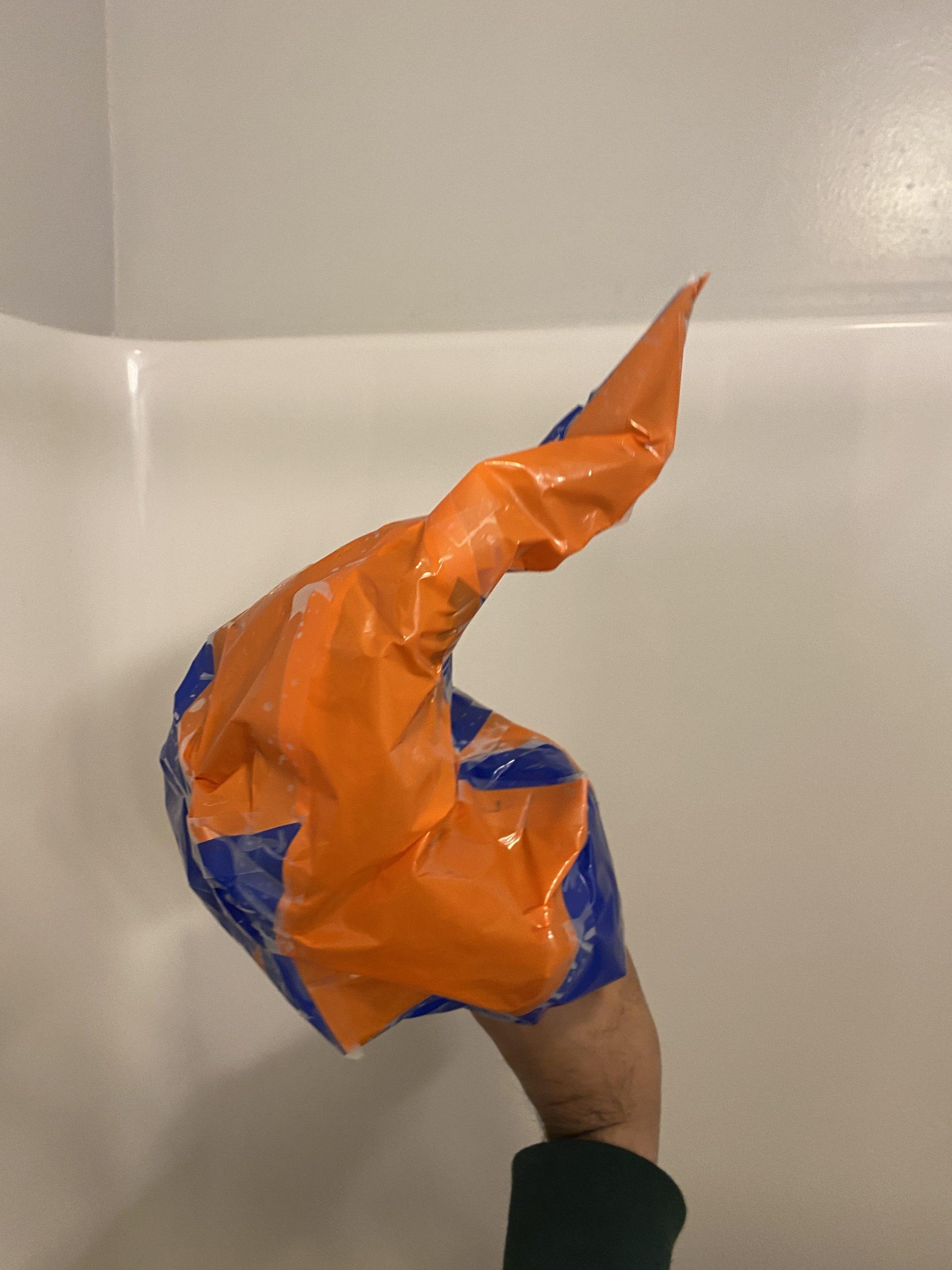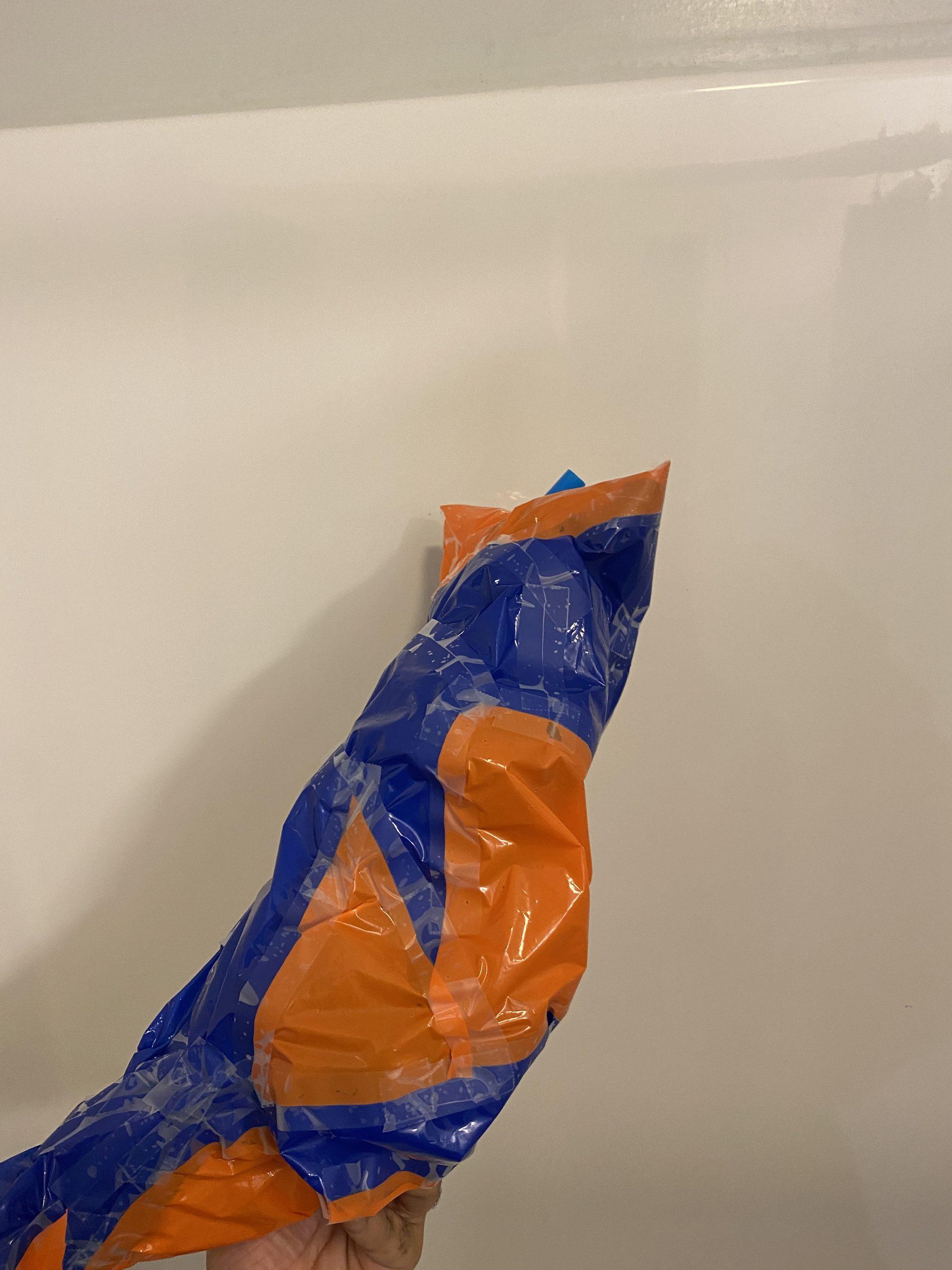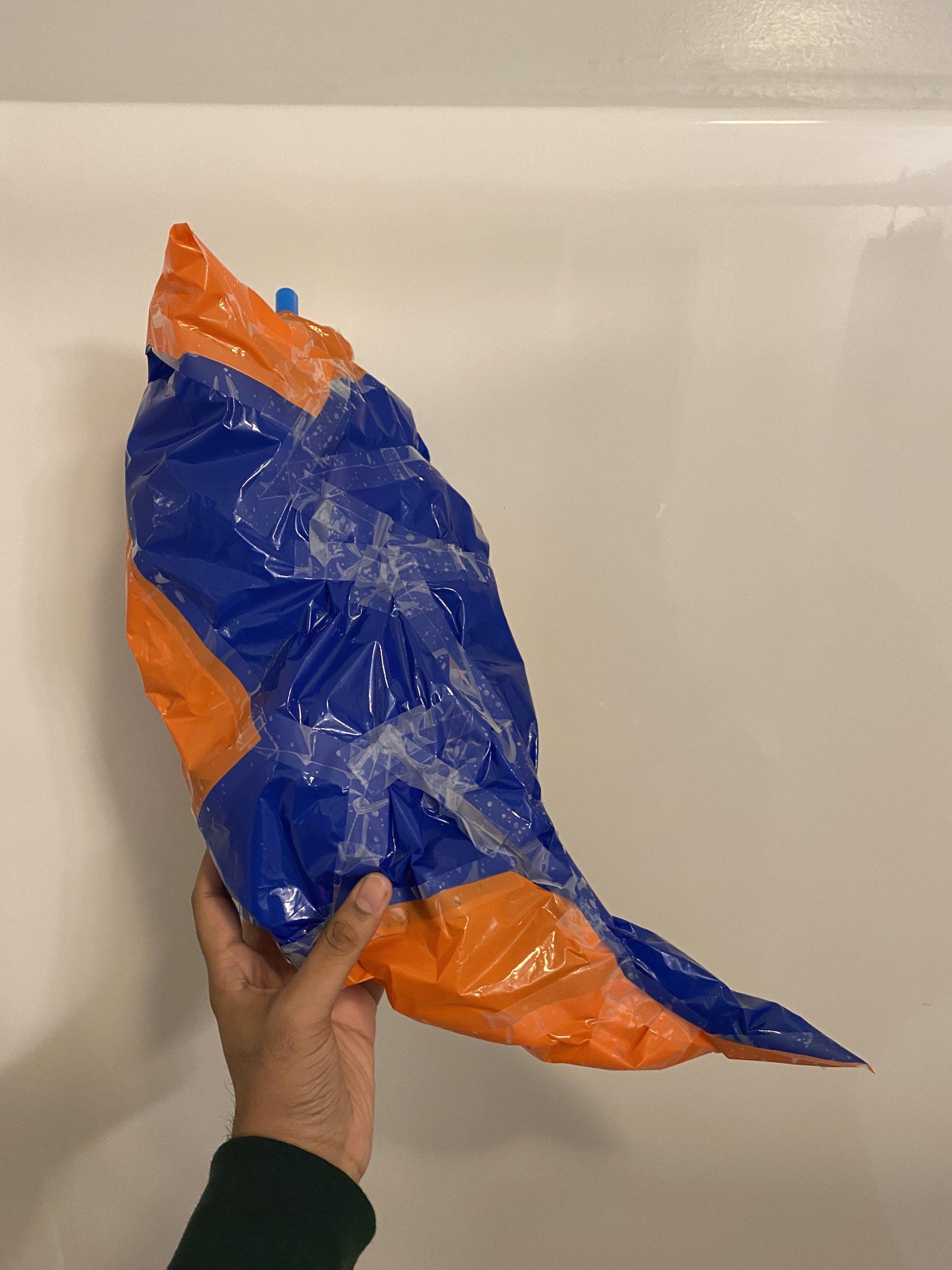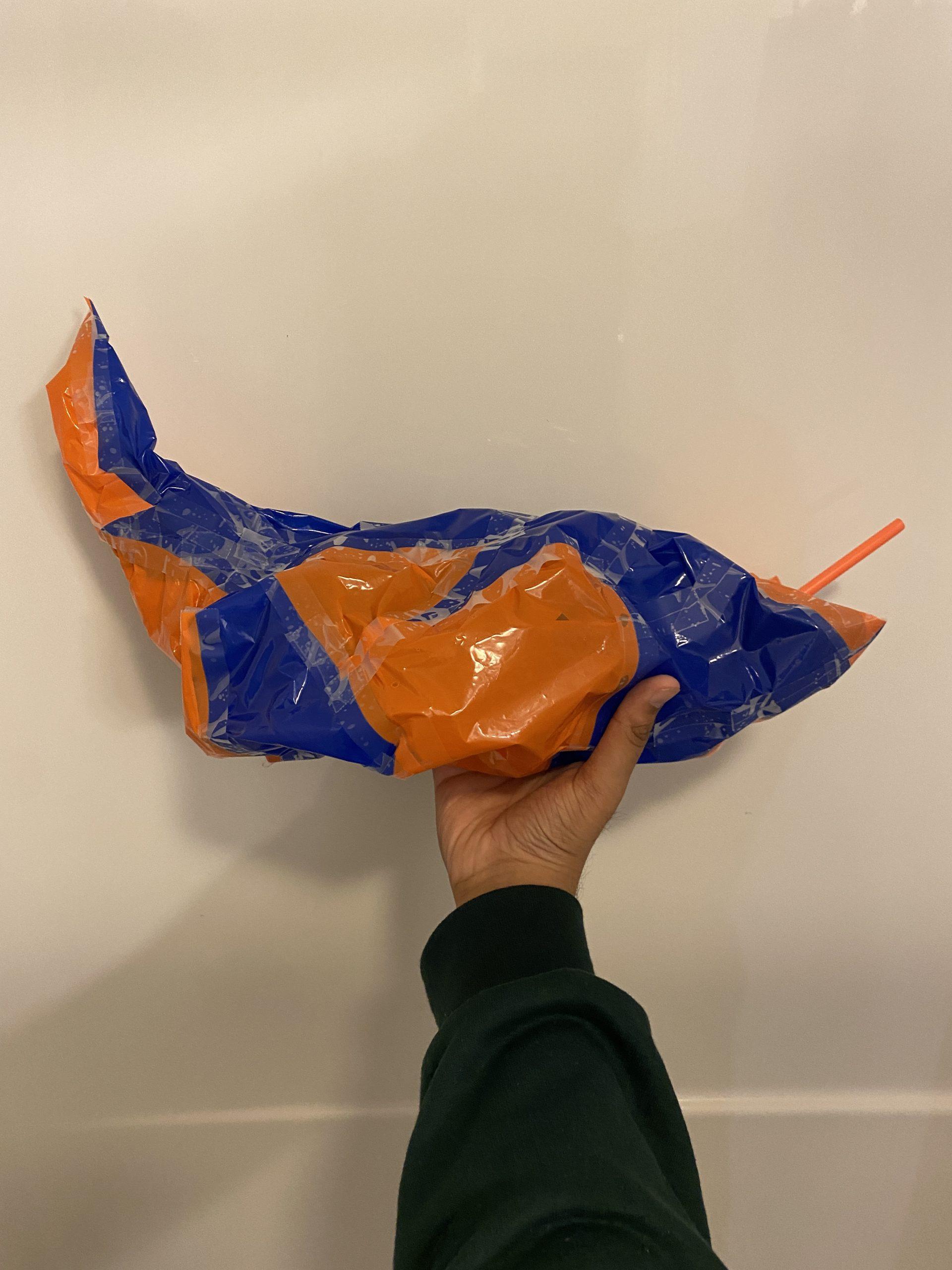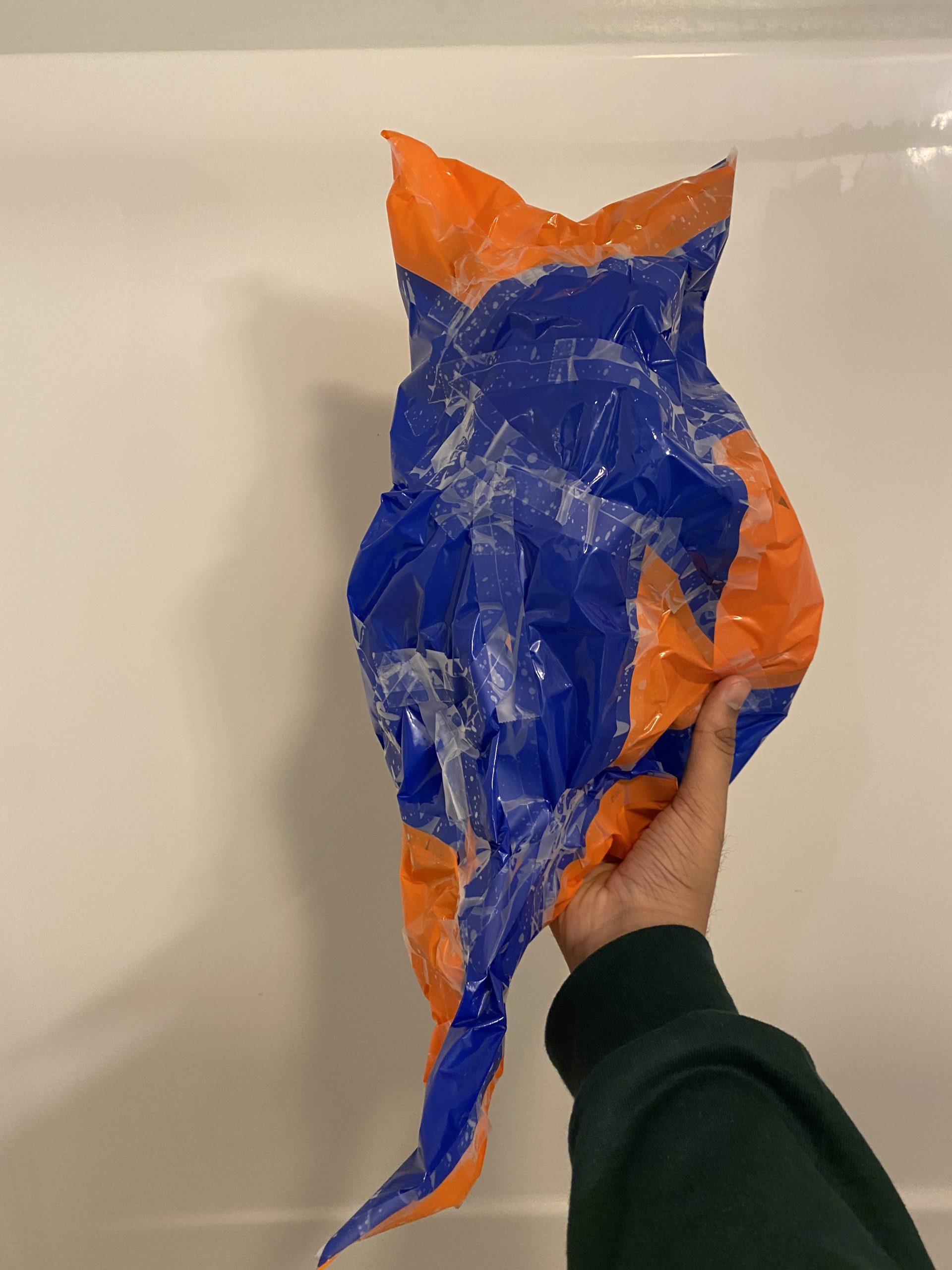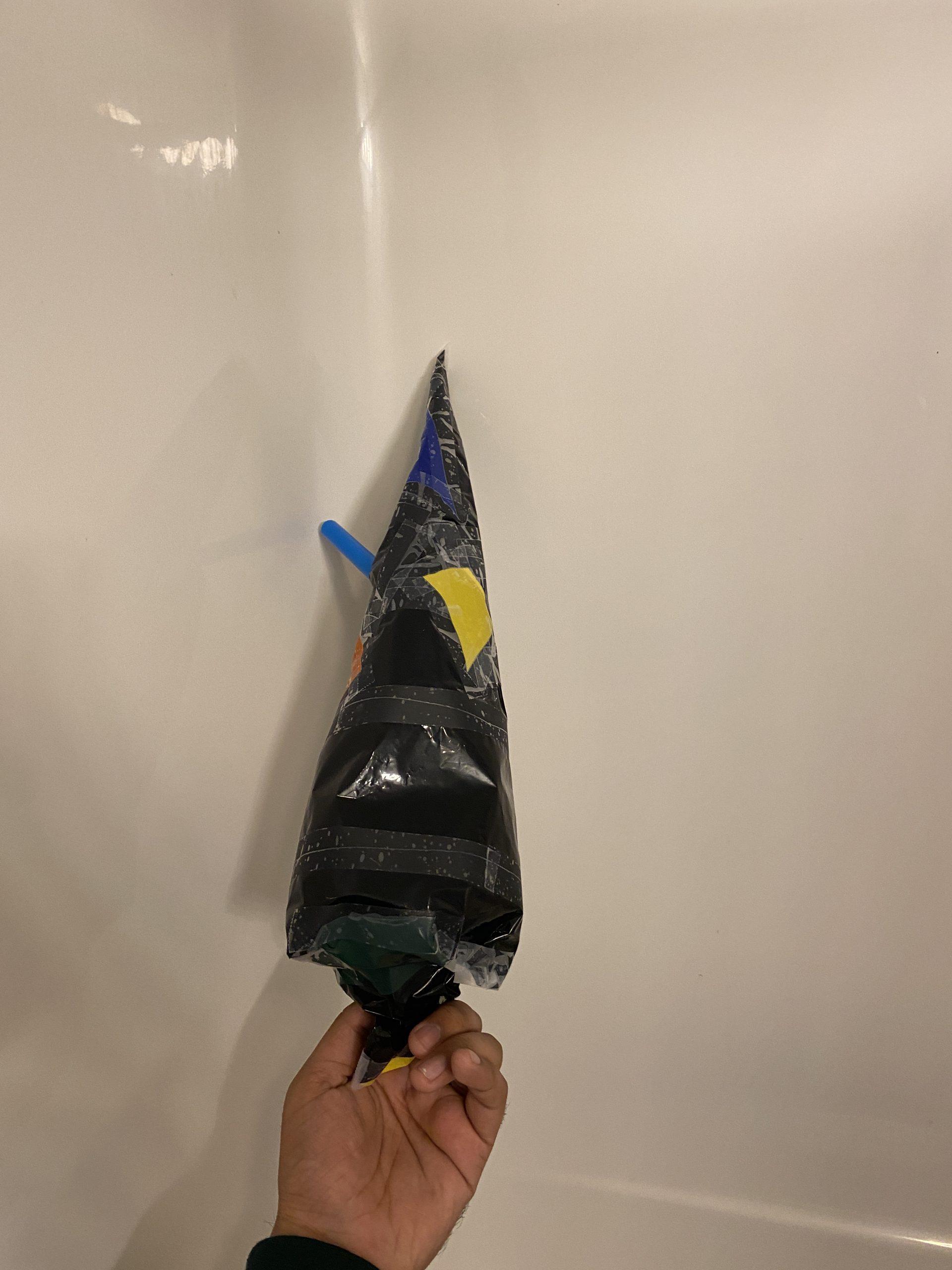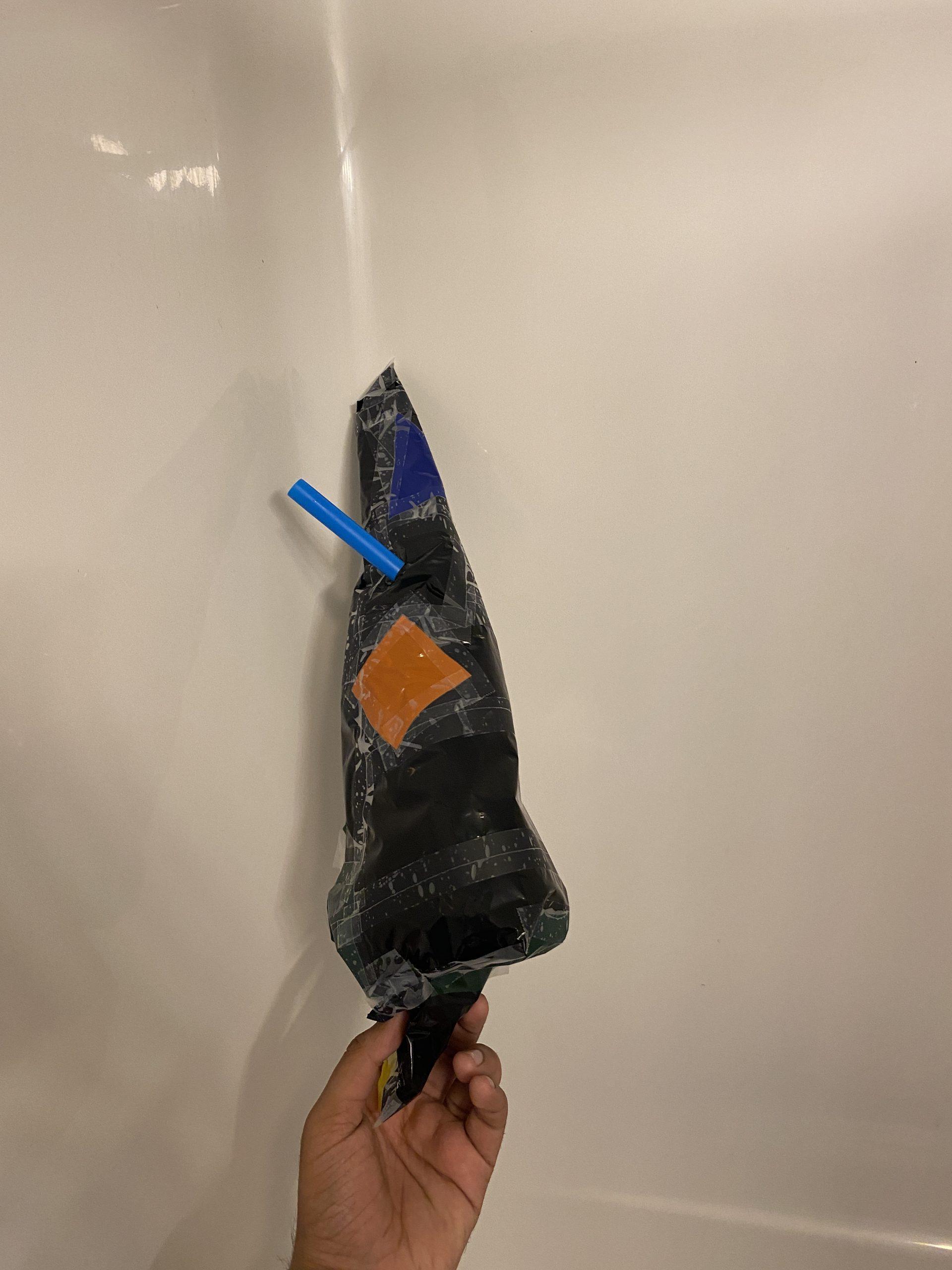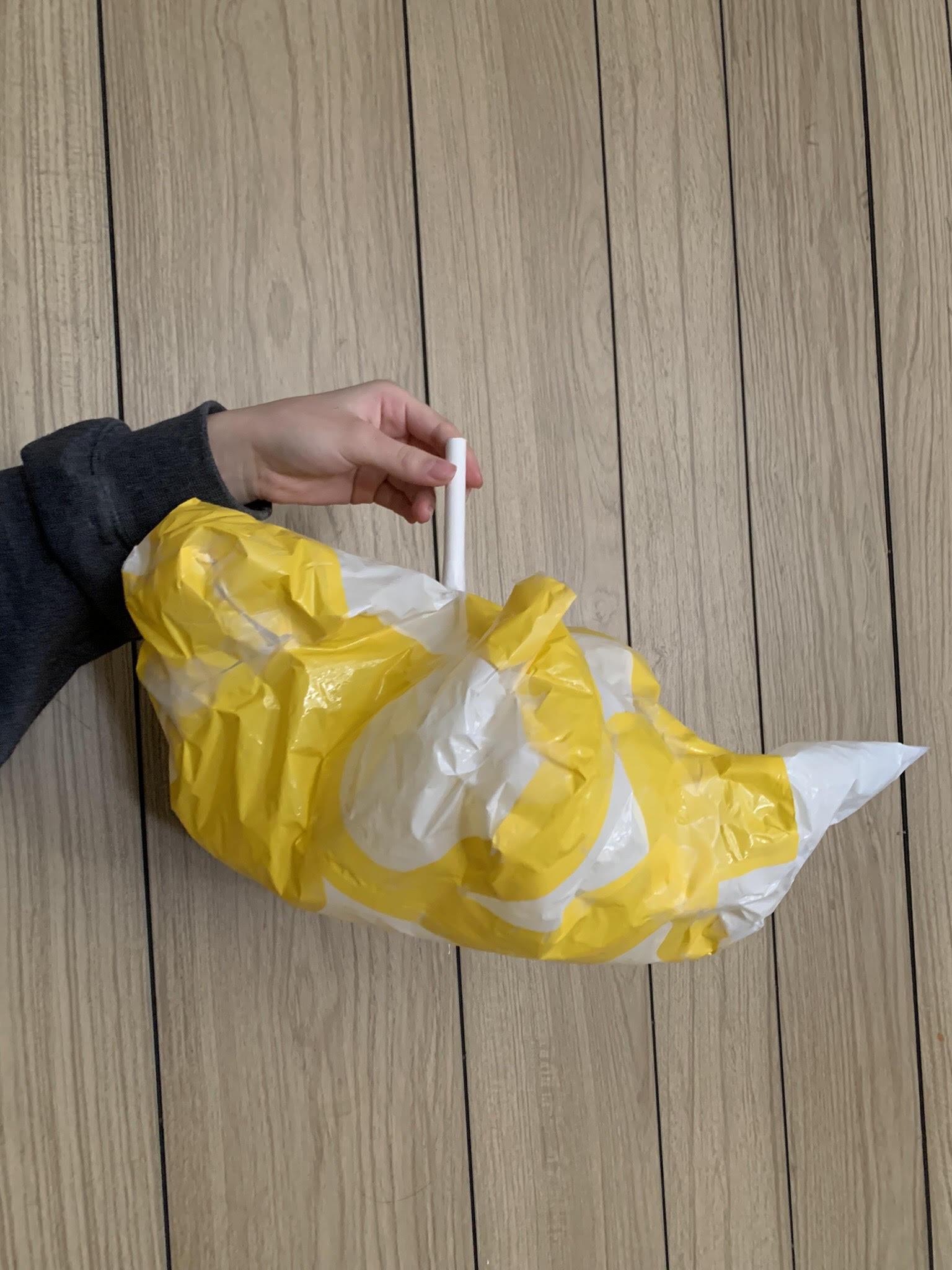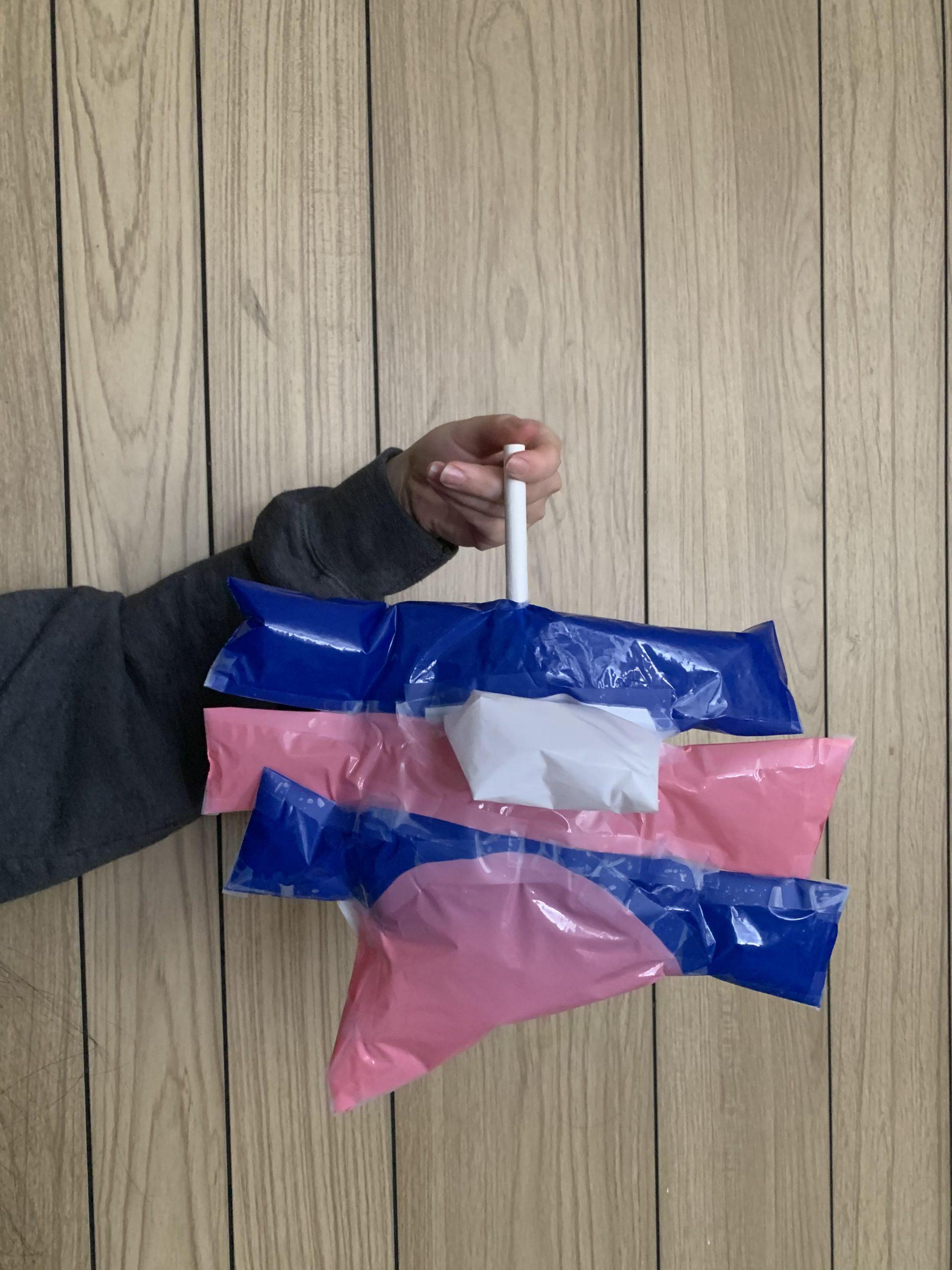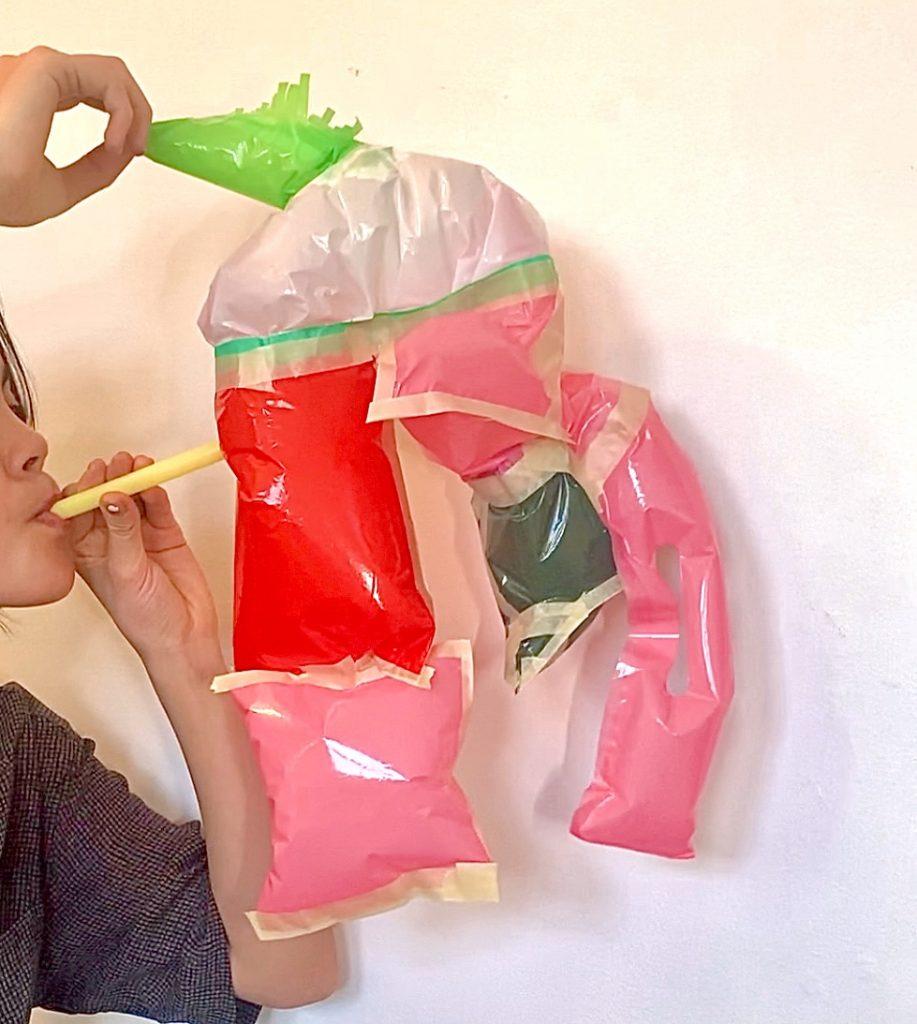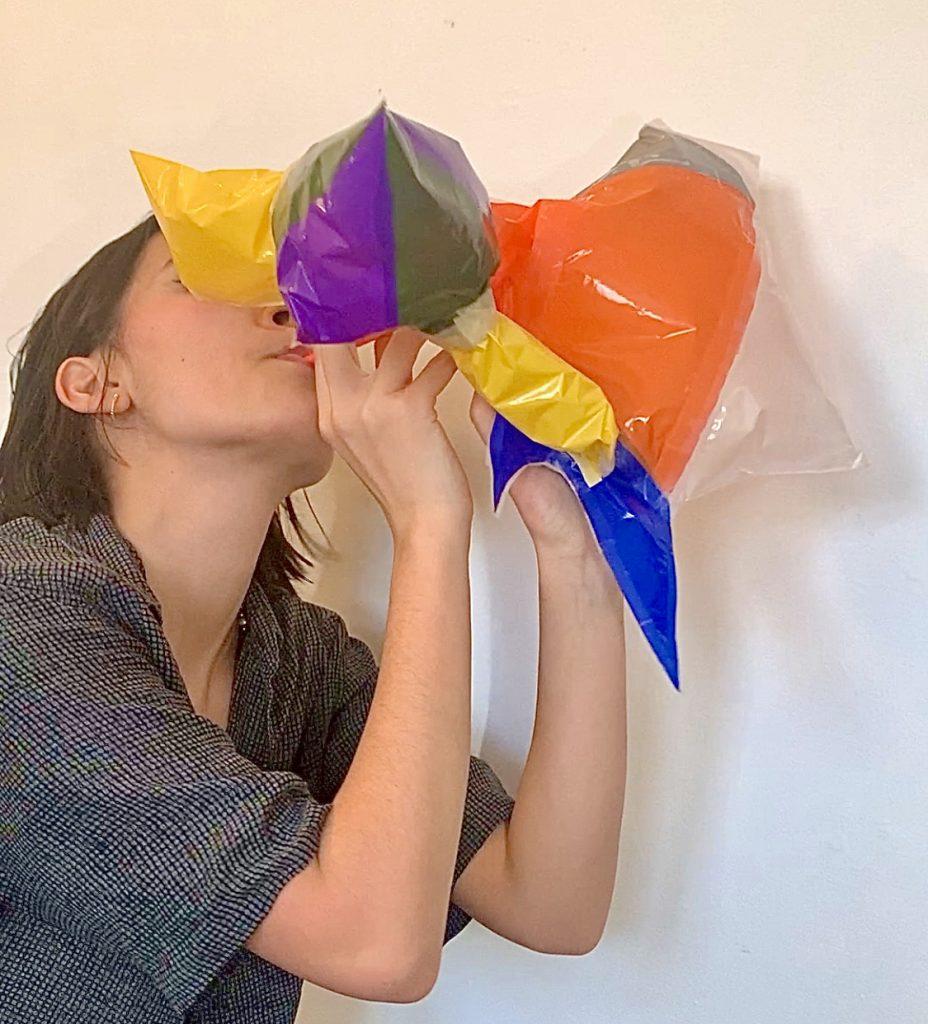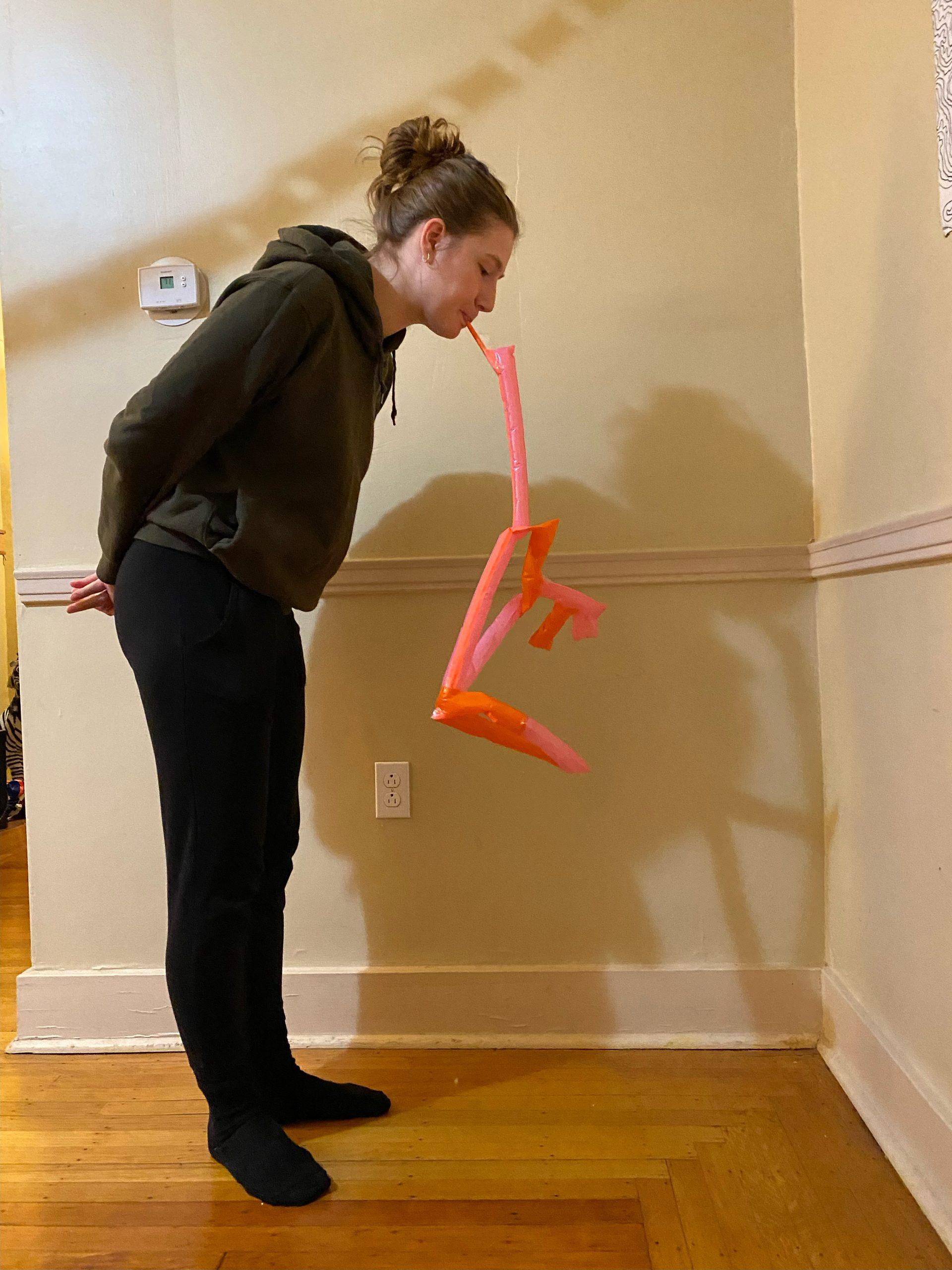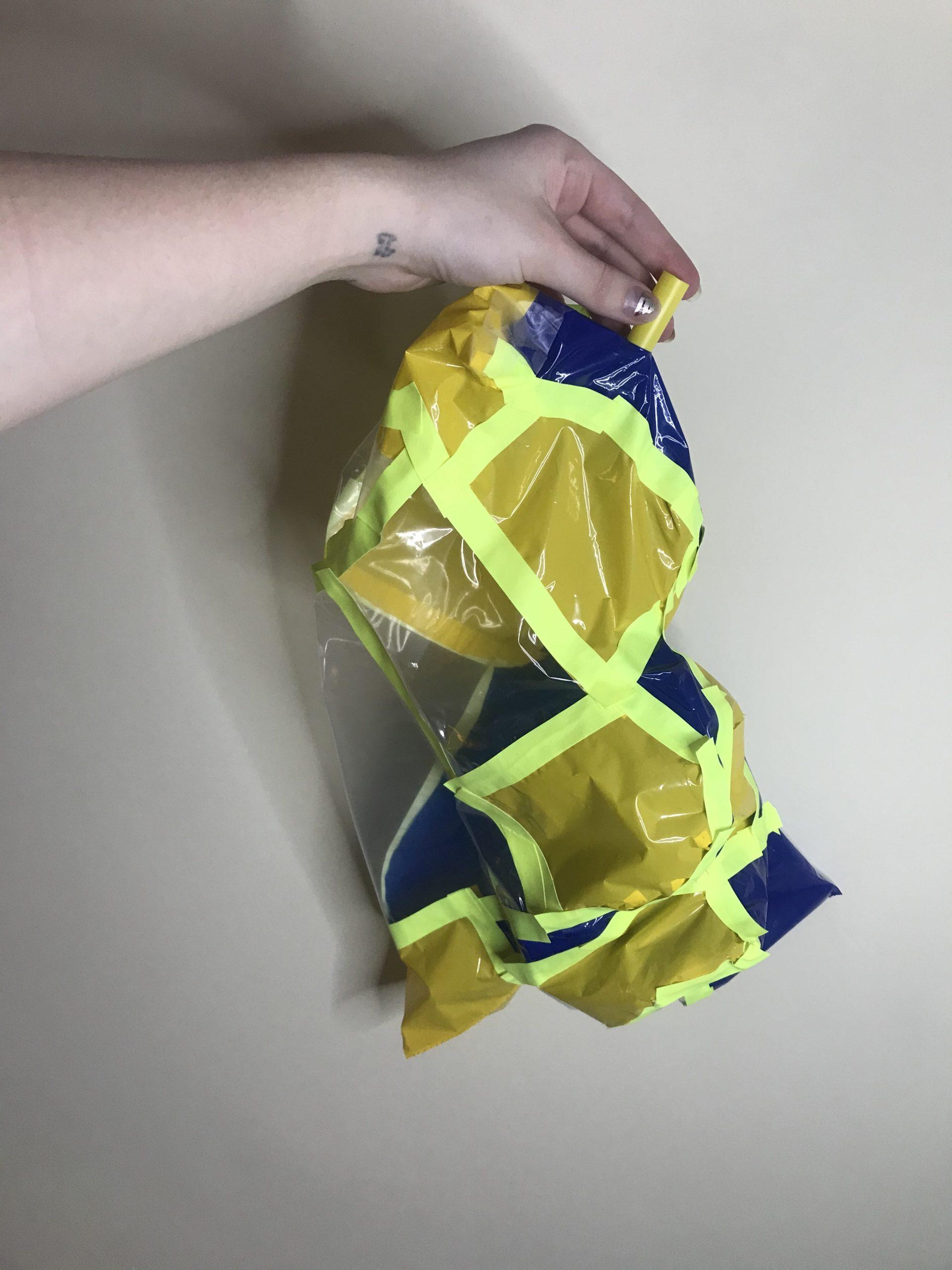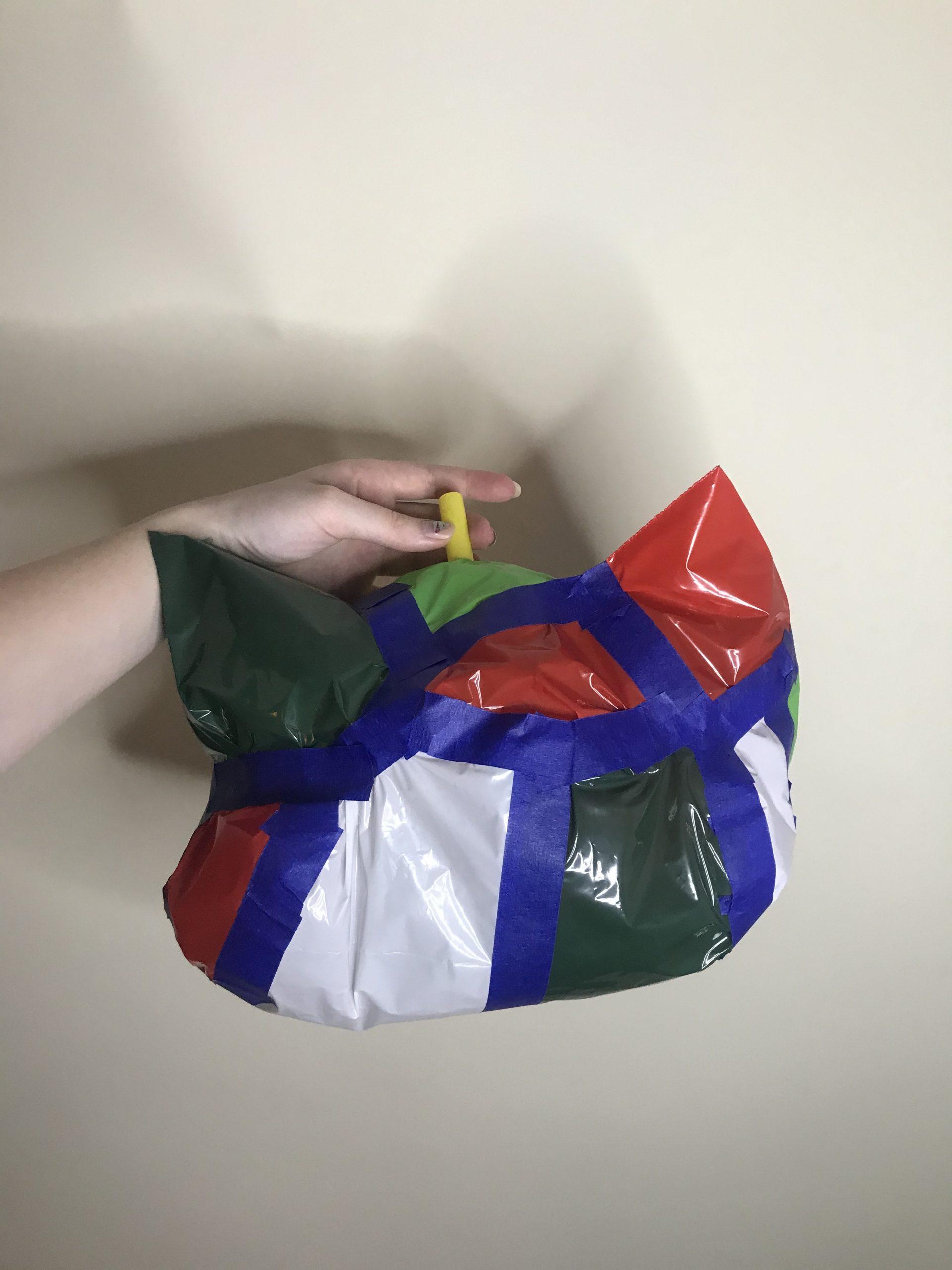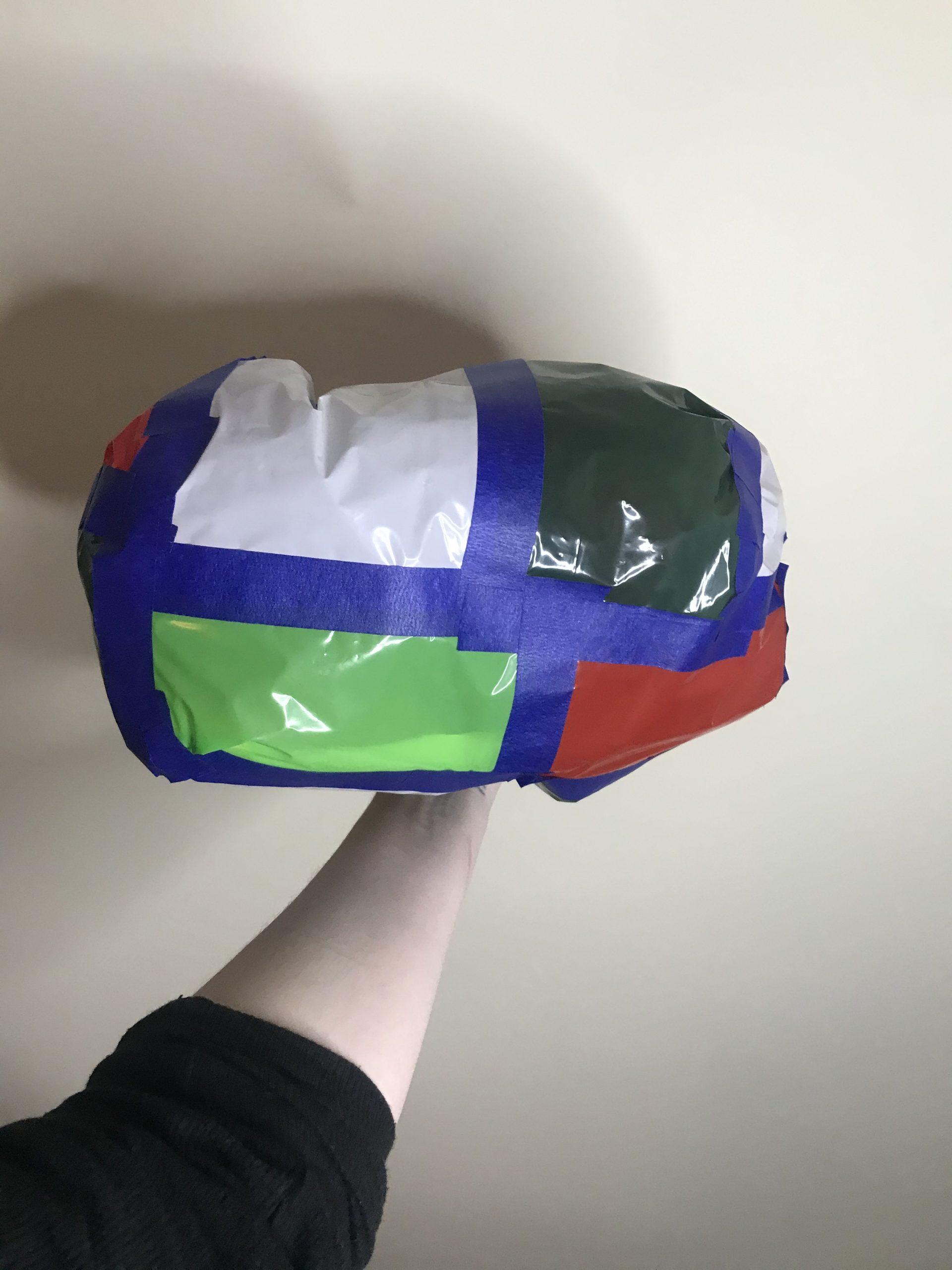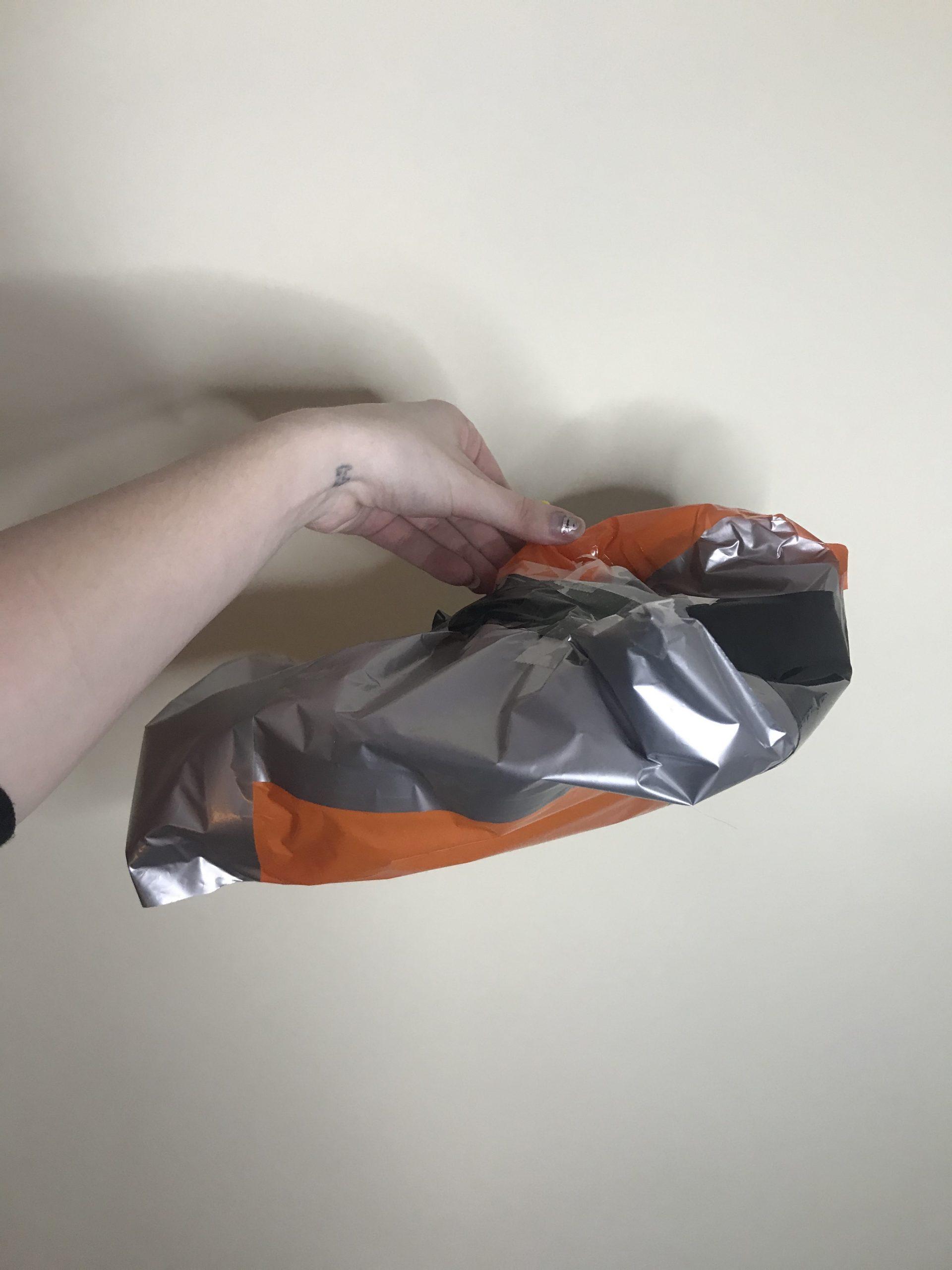This project has challenged me greatly, perhaps too much. Before receiving the materials for the project, I decided that at some point I’d want to make a bag out of rogue items anyways, so I decided why not first for practice. This was a rude awakening to the art form because I was unhinged cutting the most irregular shapes for myself out of trash bags of varying textures, of varying qualities (some riddled with tiny perforations that had me retracing many steps at times), using three separate kinds of tape, and both inside and outside taping methods. Looking back, what was my most frustrating piece may truly be my favorite. I enjoy the recycled look, the organic form, the semi-deflated state structure, the ingenuity, and the personal symbolism for me that represents trial and tribulation as well as growth as an artist.
The cube was my next inflatable and a protest to my previous irregular organic form. I wanted to cut neat (as neat as my unsteady hands allow) regular shapes and make an straightforward and what I thought would be easy shape. Turns out a cube is not as easy as it seemed. This presented challenges and learning opportunities in how tiny errors in pattern pieces can add up to create cattywampus edges that do not desire to meet. This was also an opportunity to practice using tape to crease the edges and as a structural element. Going forward, what I will think about most from this cube was the 3 unique states of this cube: pre-inflating deflated, inflated, post-inflation deflation. They range from flat to almost spherical to a “perfect” cube.
The sun/flower was the result of a post dinner communion drinking tea on the kitchen floor. An excited group of friends saw my supplies for this class and were inspired to join me making inflatables. To their dismay, it is a bit harder than they first thought and had to reel in their tremendous ideas of grandeur, ultimately making a non-inflated headdress, a bag (from pieces of a cut bag), a mitten like structure, and a “floaty”. From this night of arts and crafts, was born an interesting play on how to play with a 2D image of an inflatable. The uniqueness of this third inflatable is the fact that when deflated, one will claim it is a sunflower, though when inflated, the pillow like sphere and conical petals create a firey sun effect.
The last inflatable was more for a joke than anything, though of course merit was found in this process. This inflatable allowed me to give personality to the piece which was valuable in character work for future inflatables when I will complete my desire to make an animal. How can I create it to represent a given emotion? How can I accessorize it to add flair? Also, with this long inflatable, I realizes that the inflating motion can be even more dynamic, for example if I rolled up the car wash man similar to a paper towel roll, and as I inflated it from the bottom, it would roll out similar to one of those birthday kazoos.

